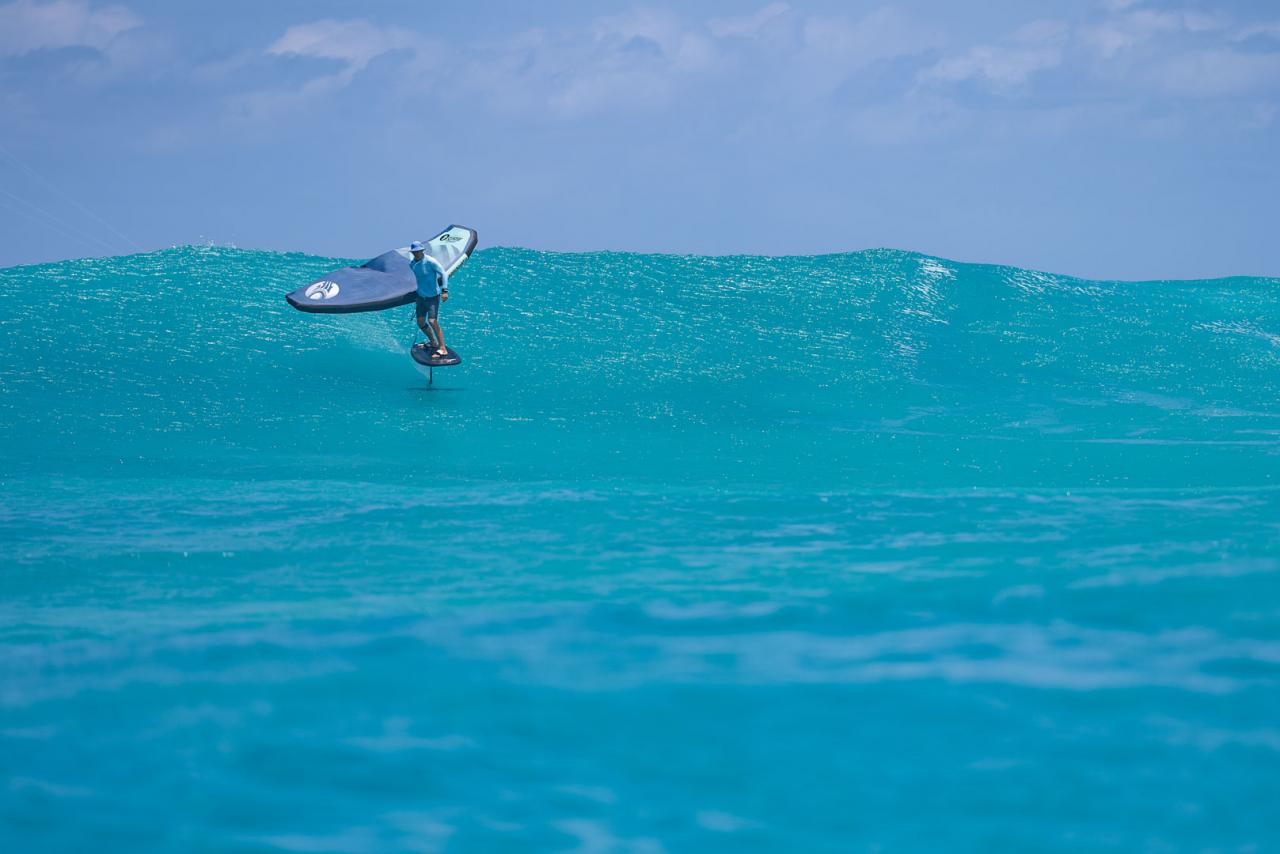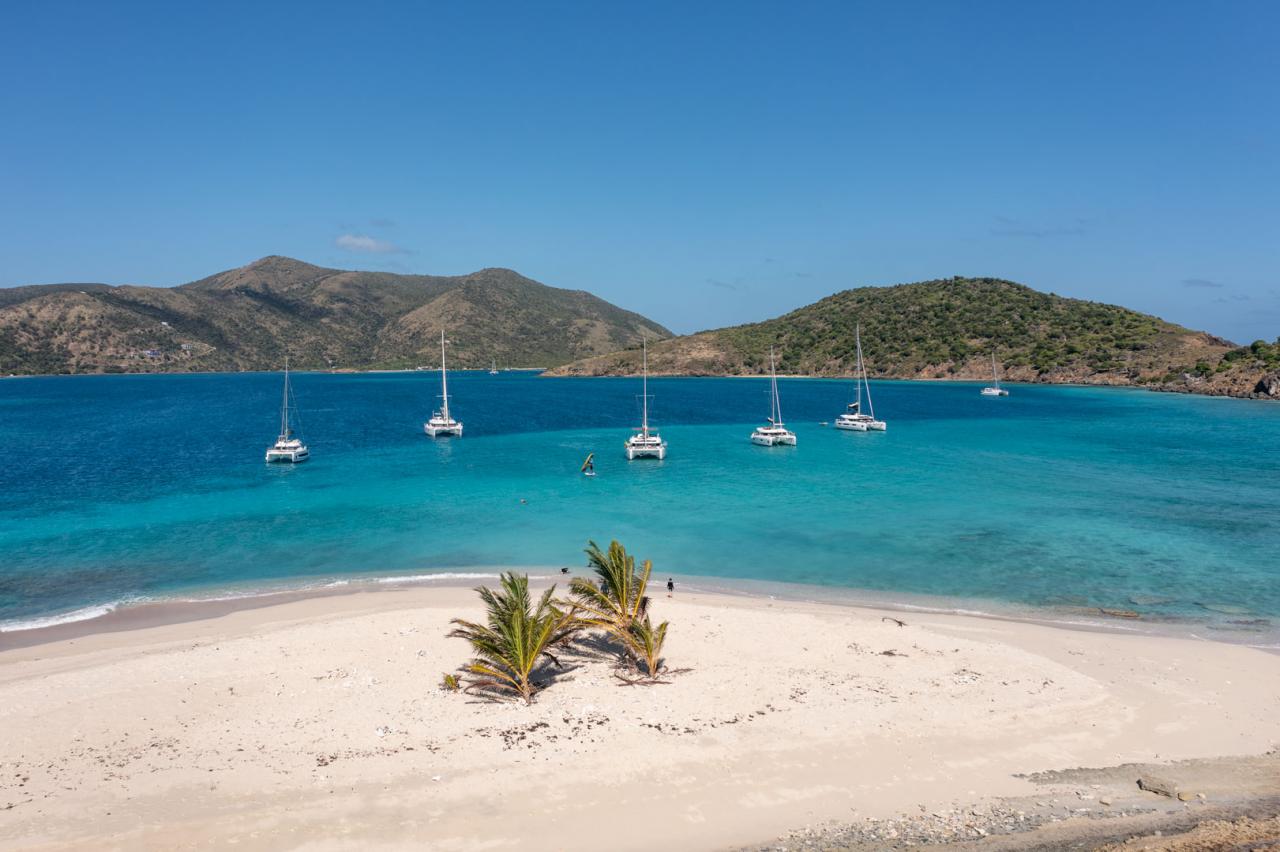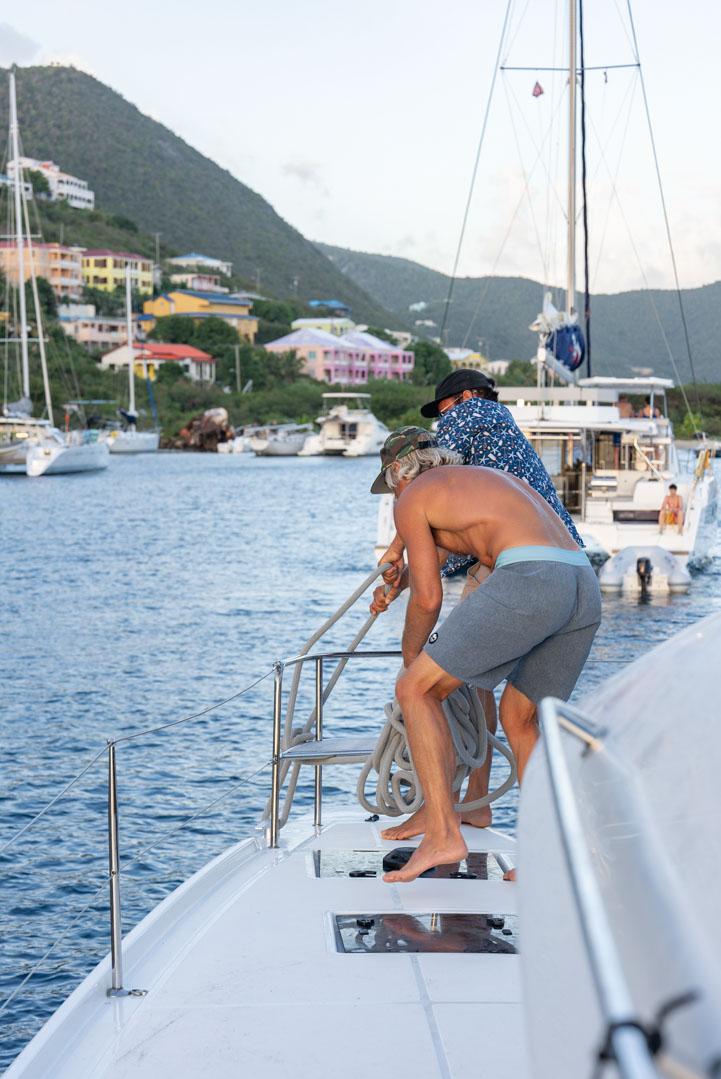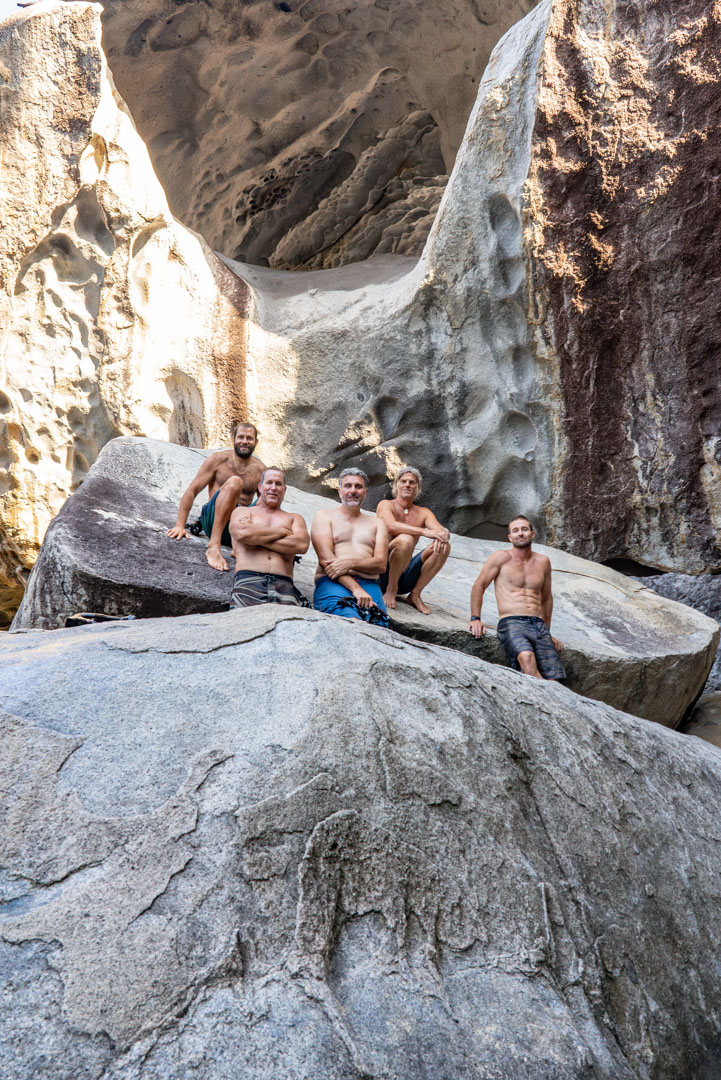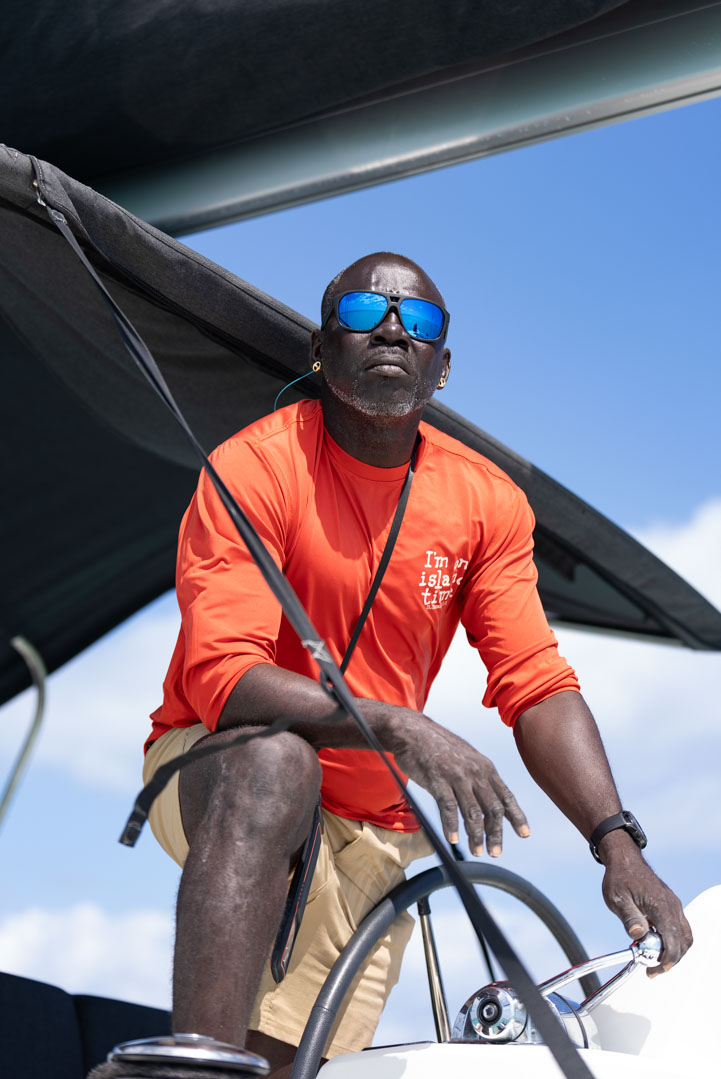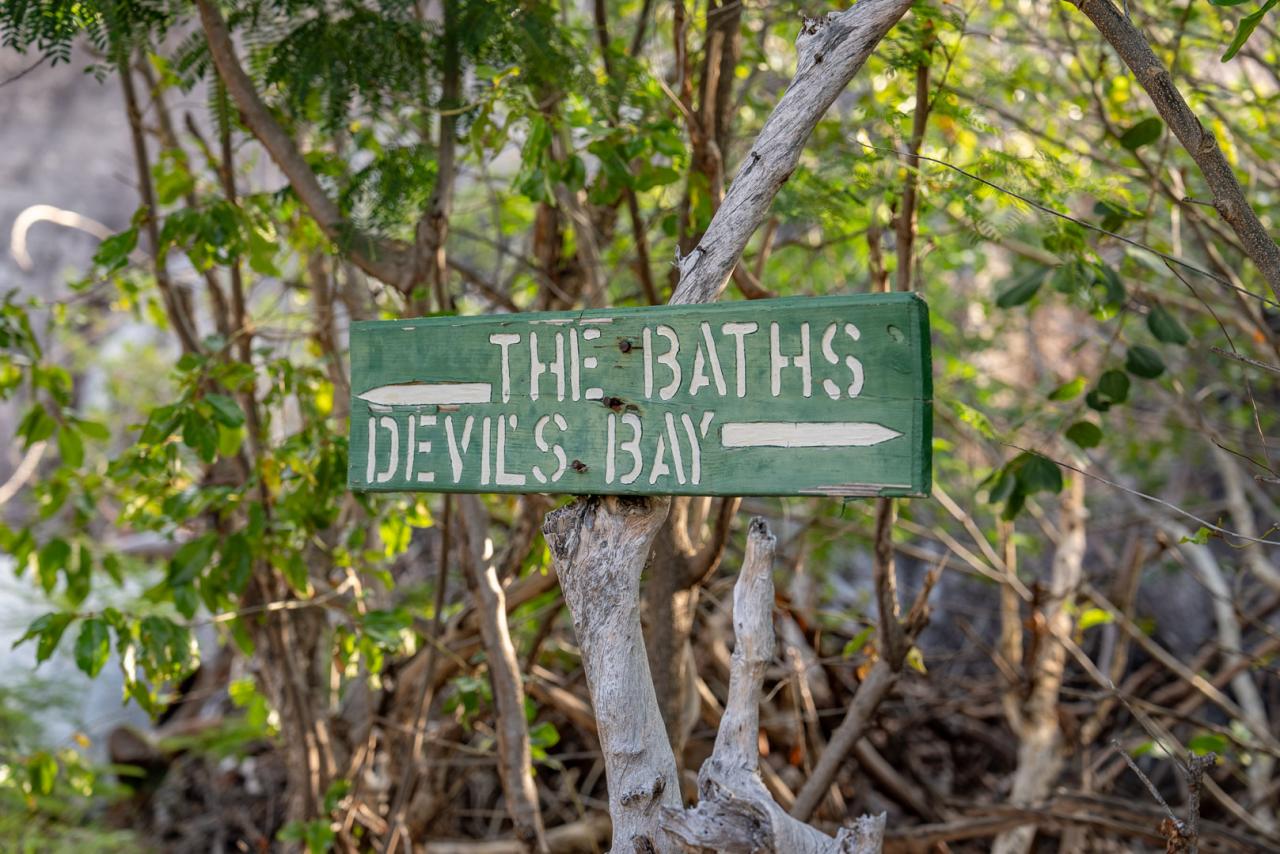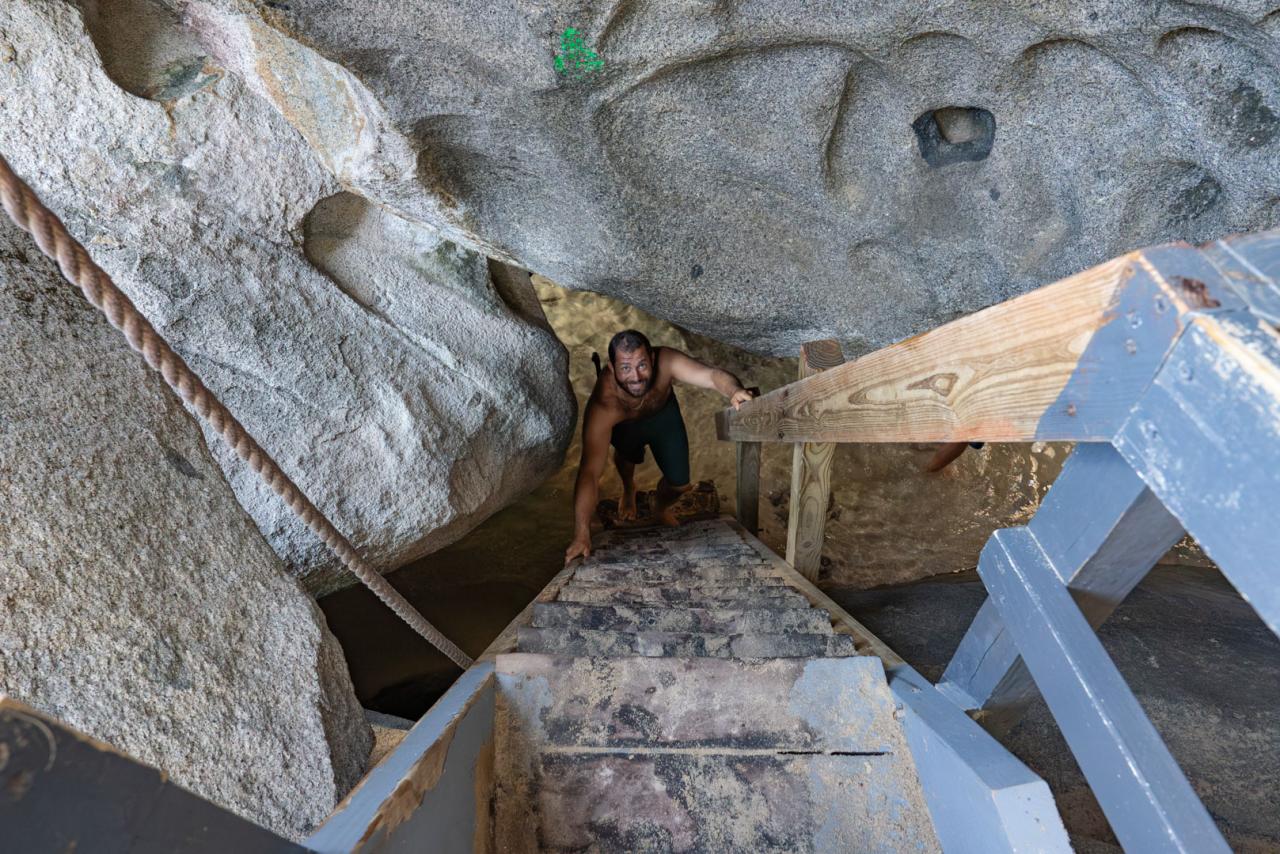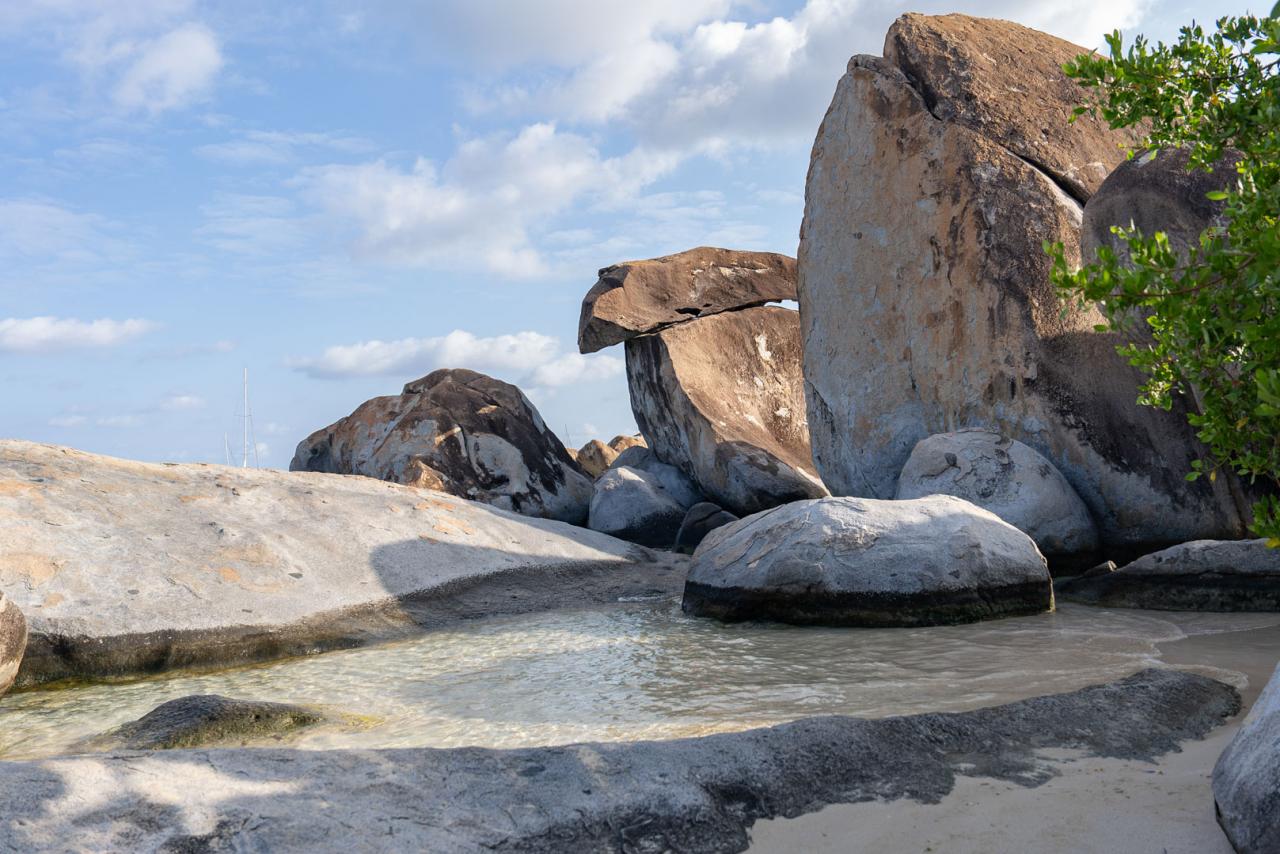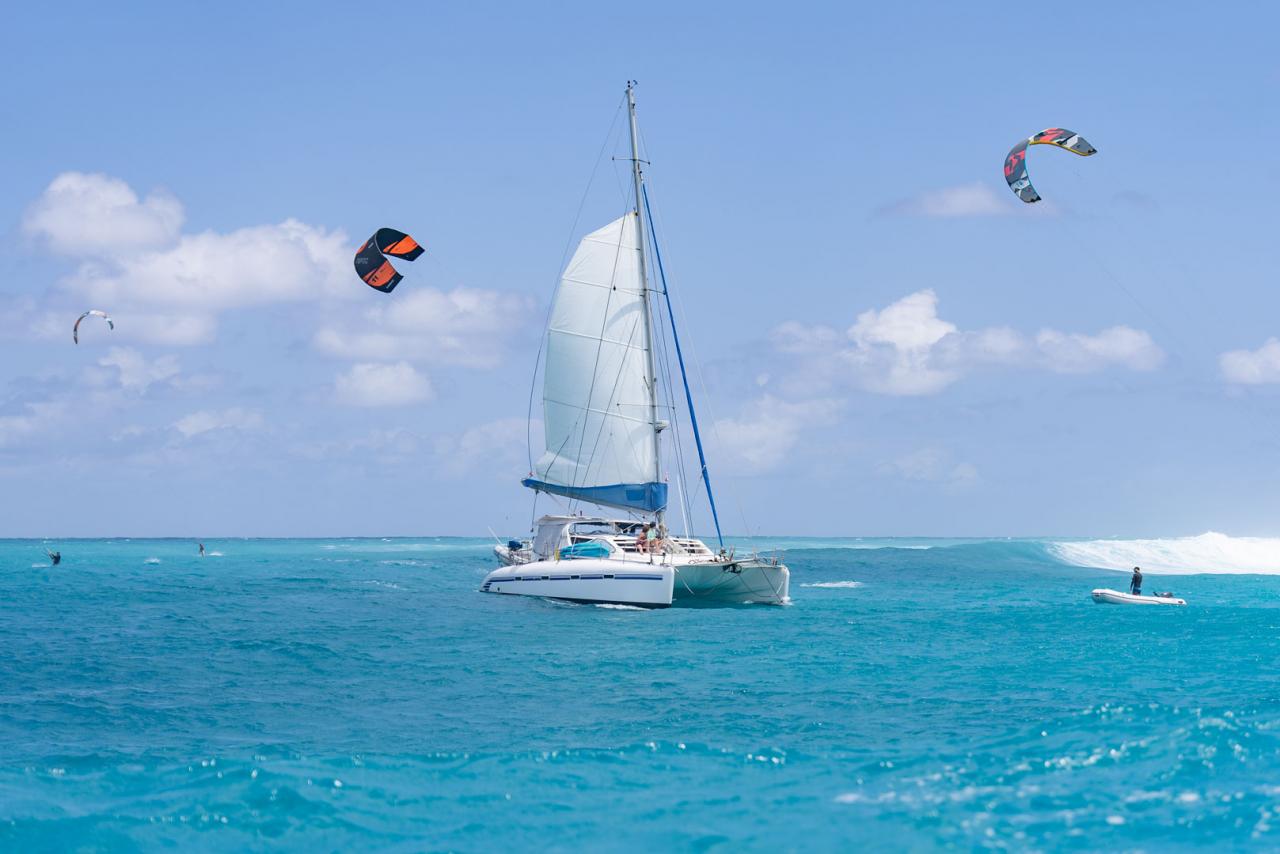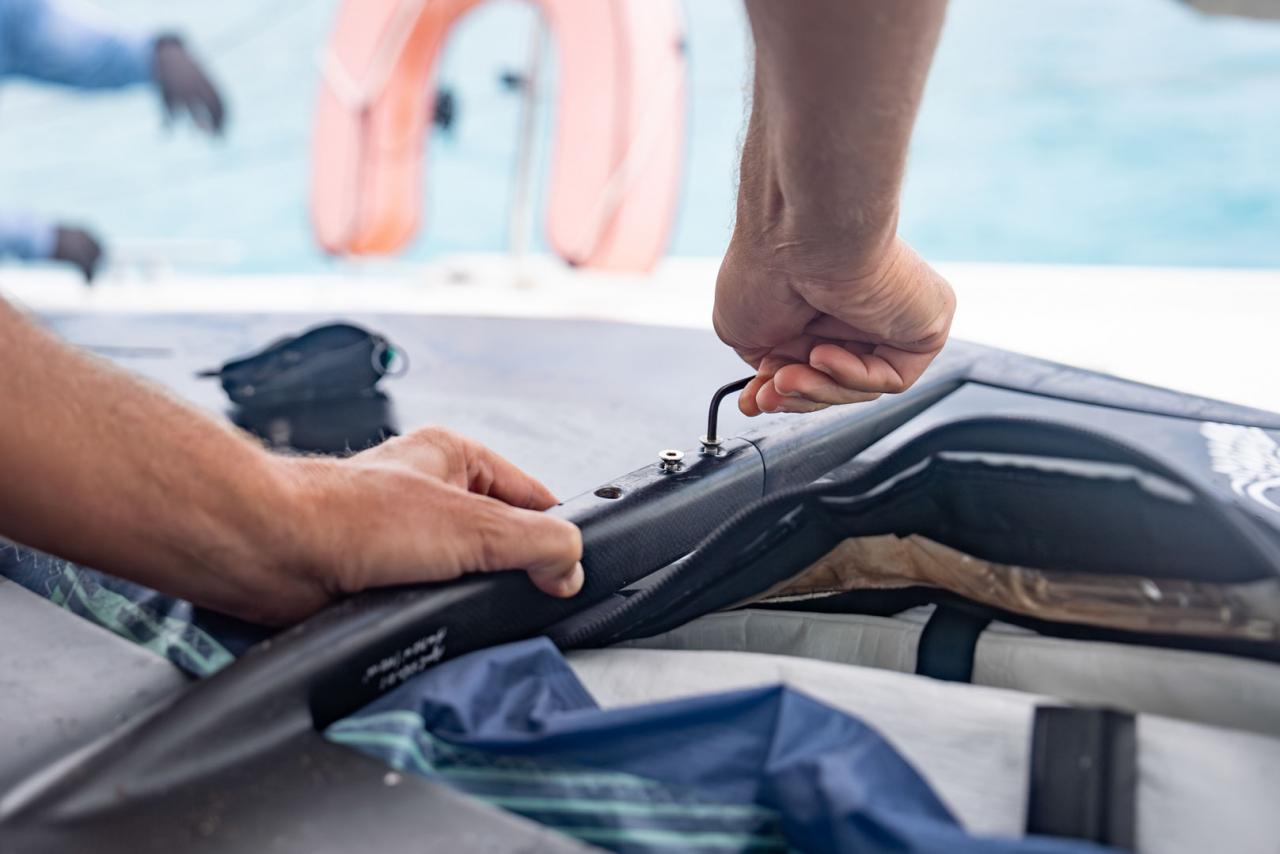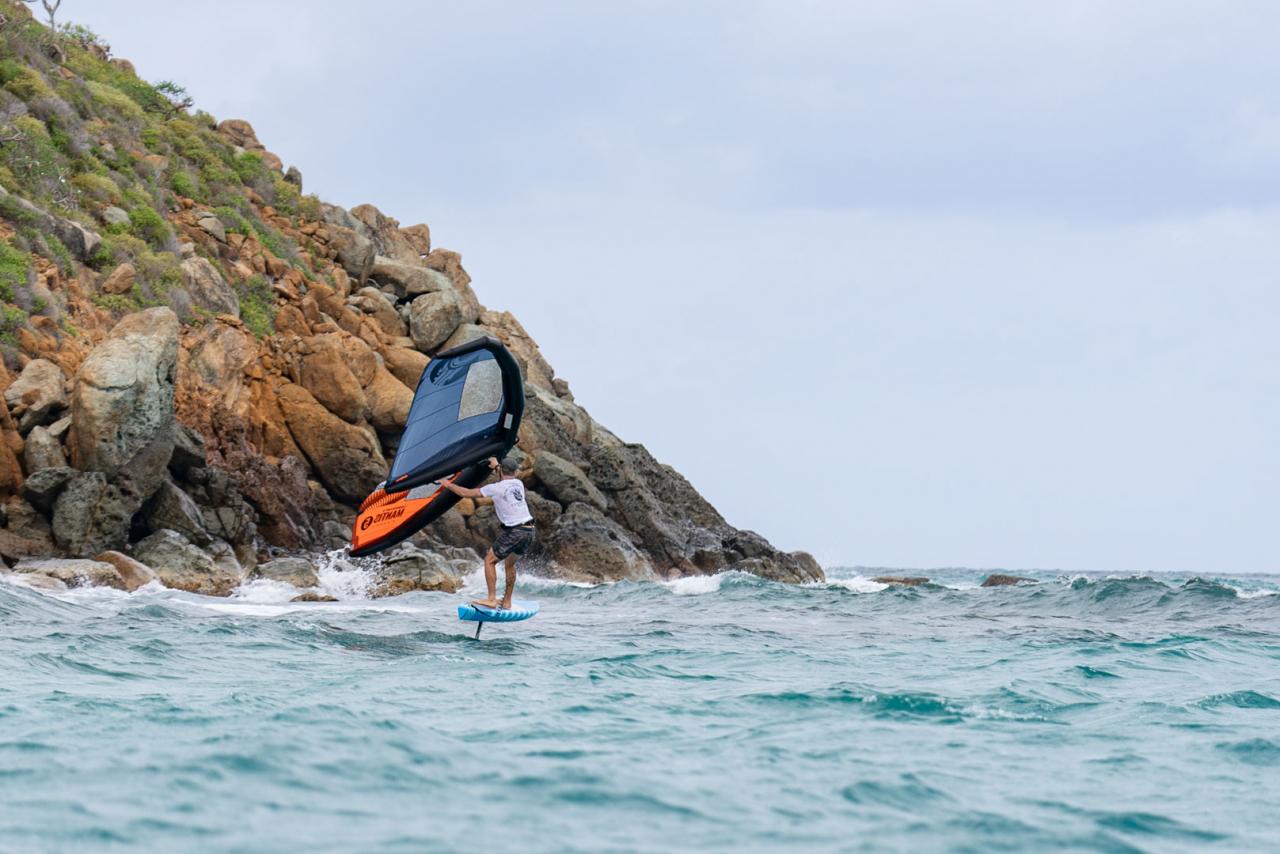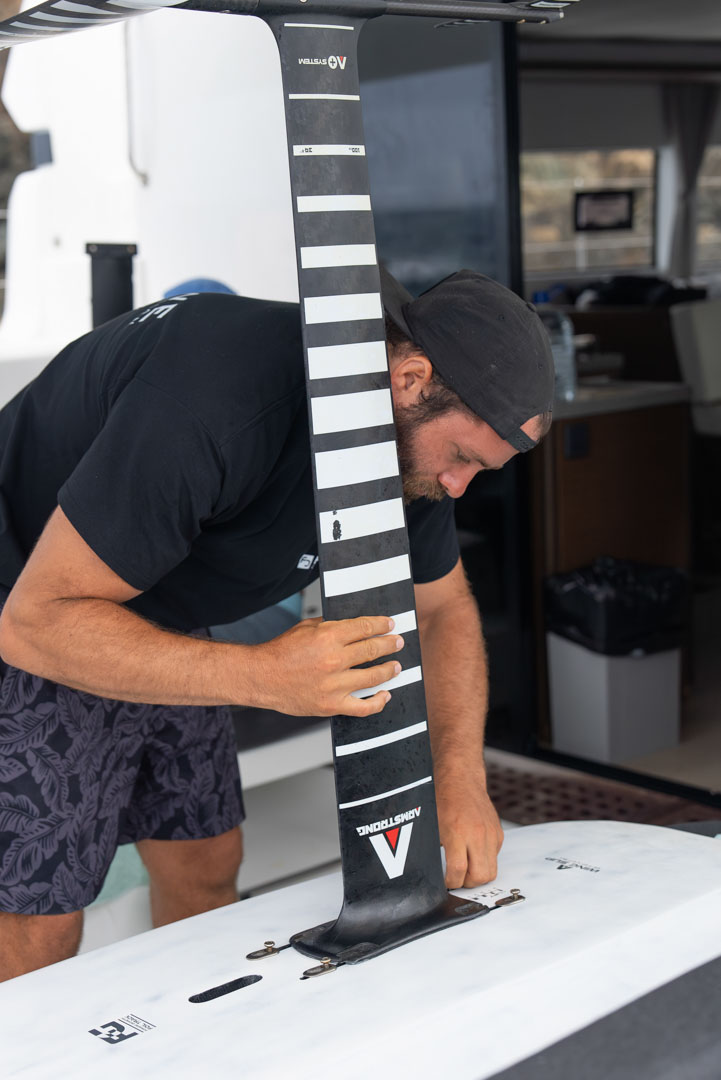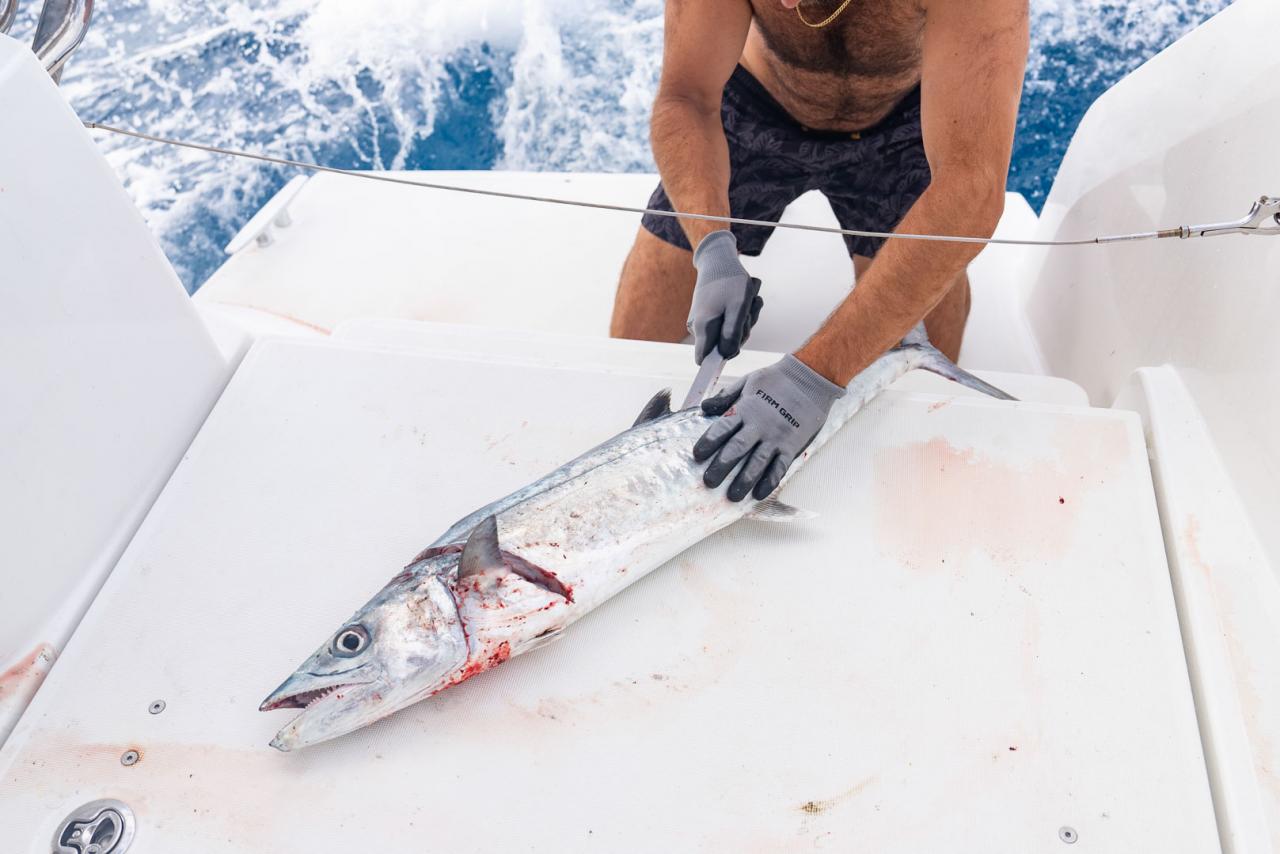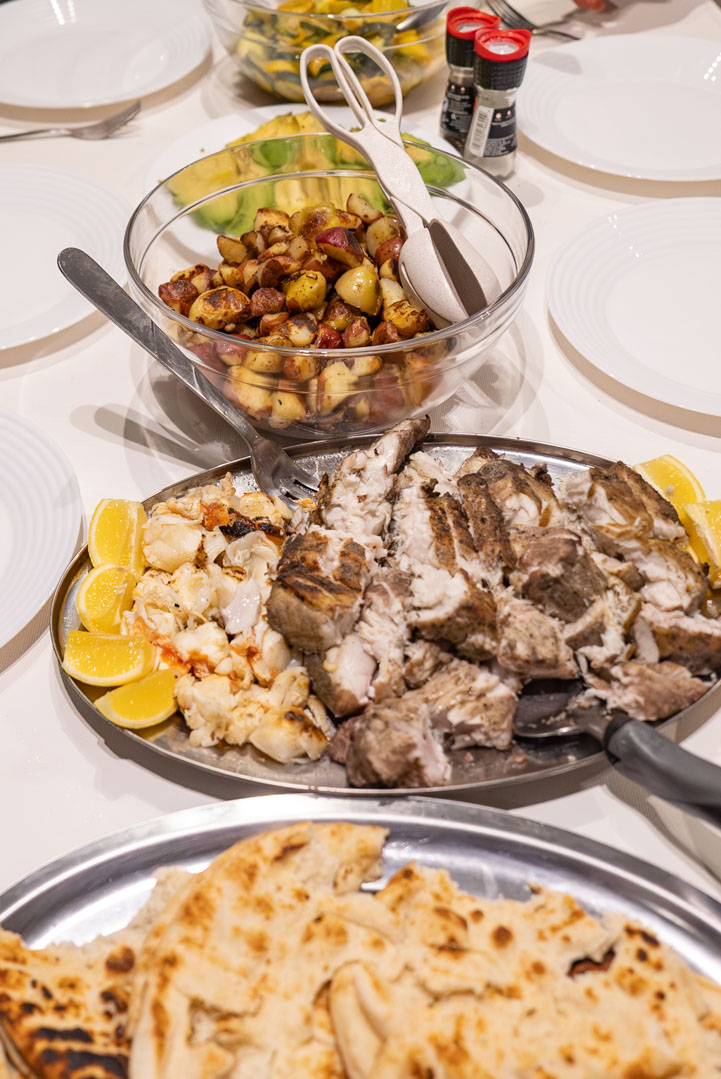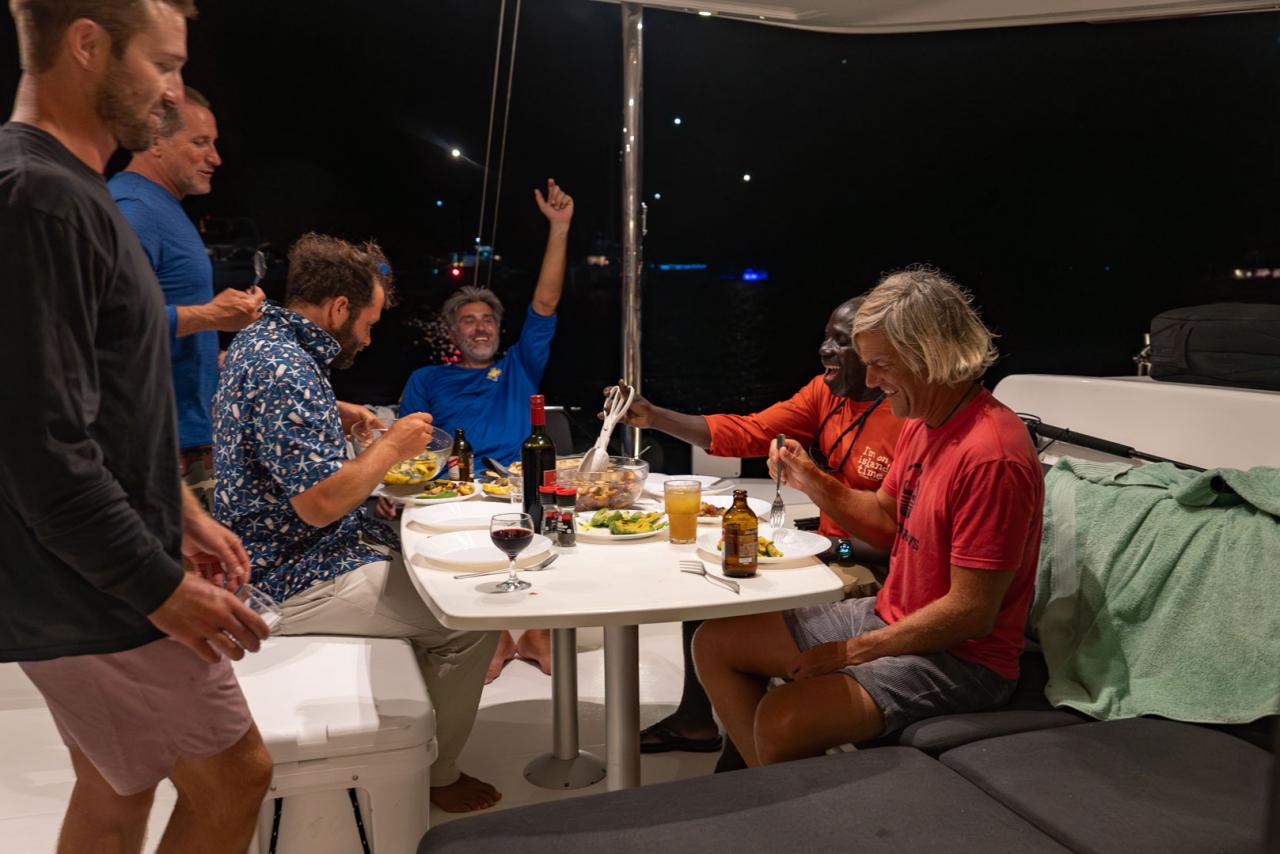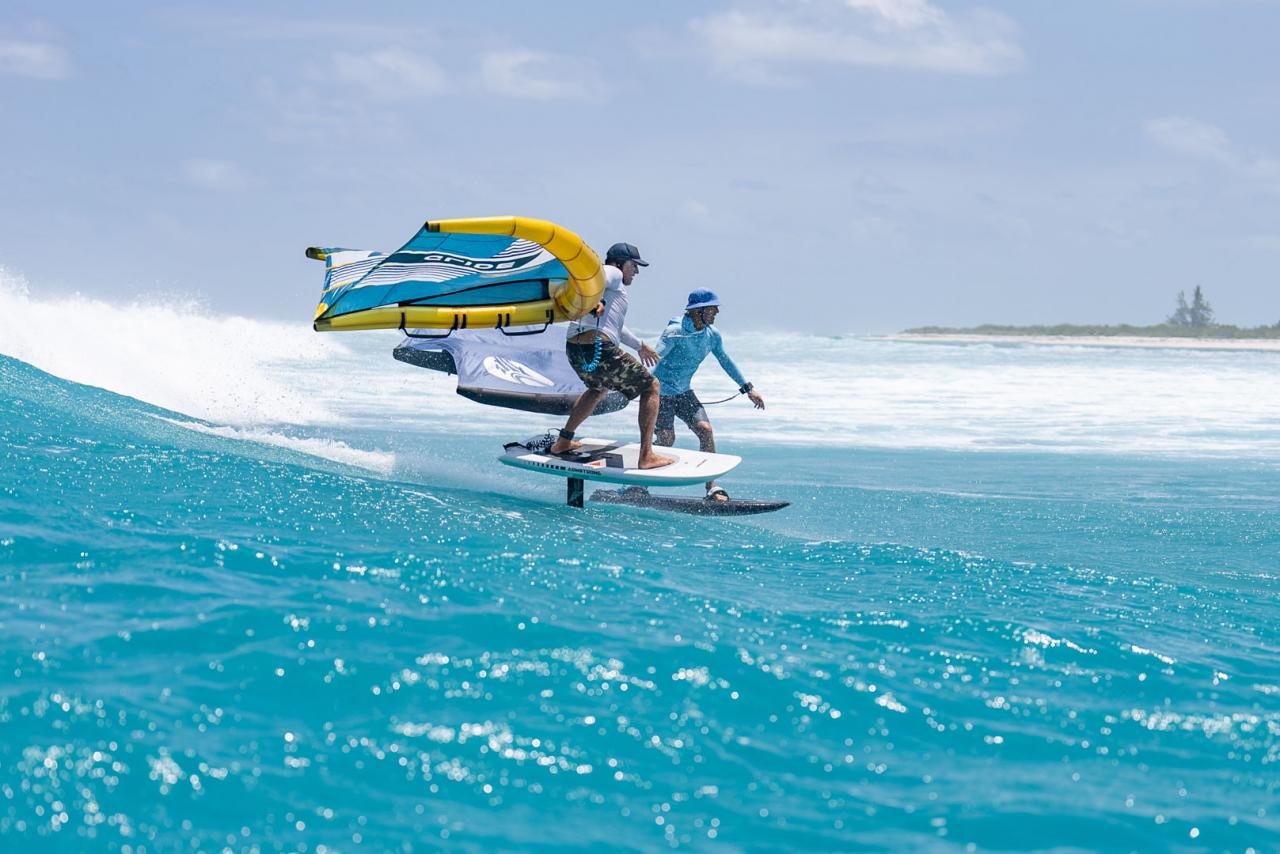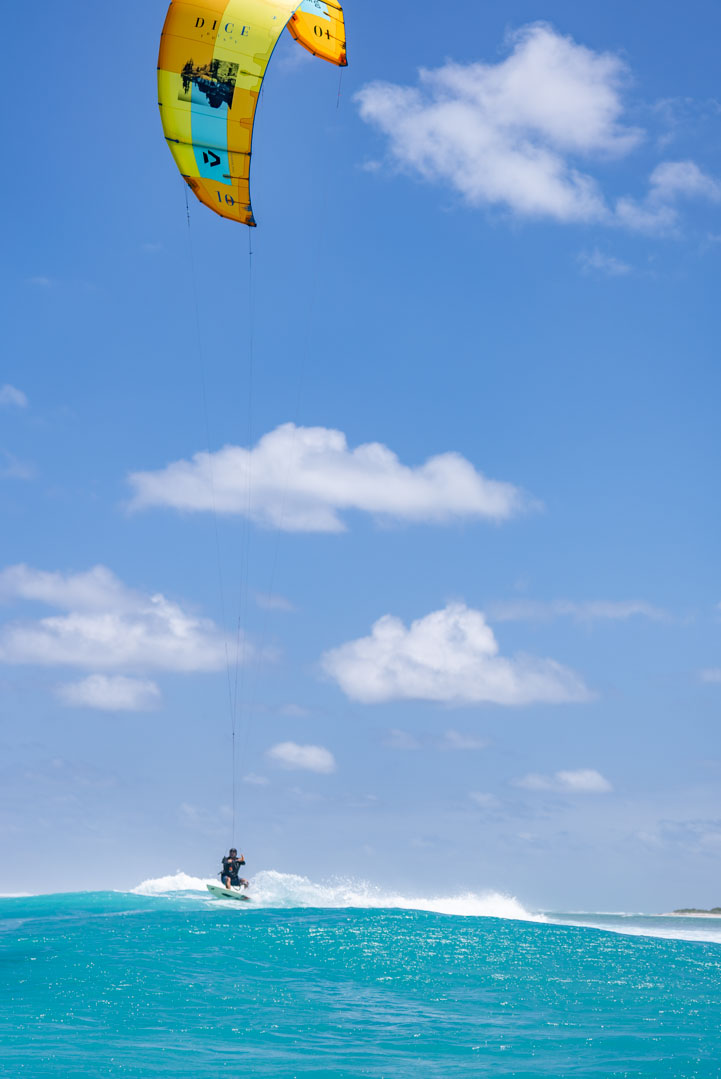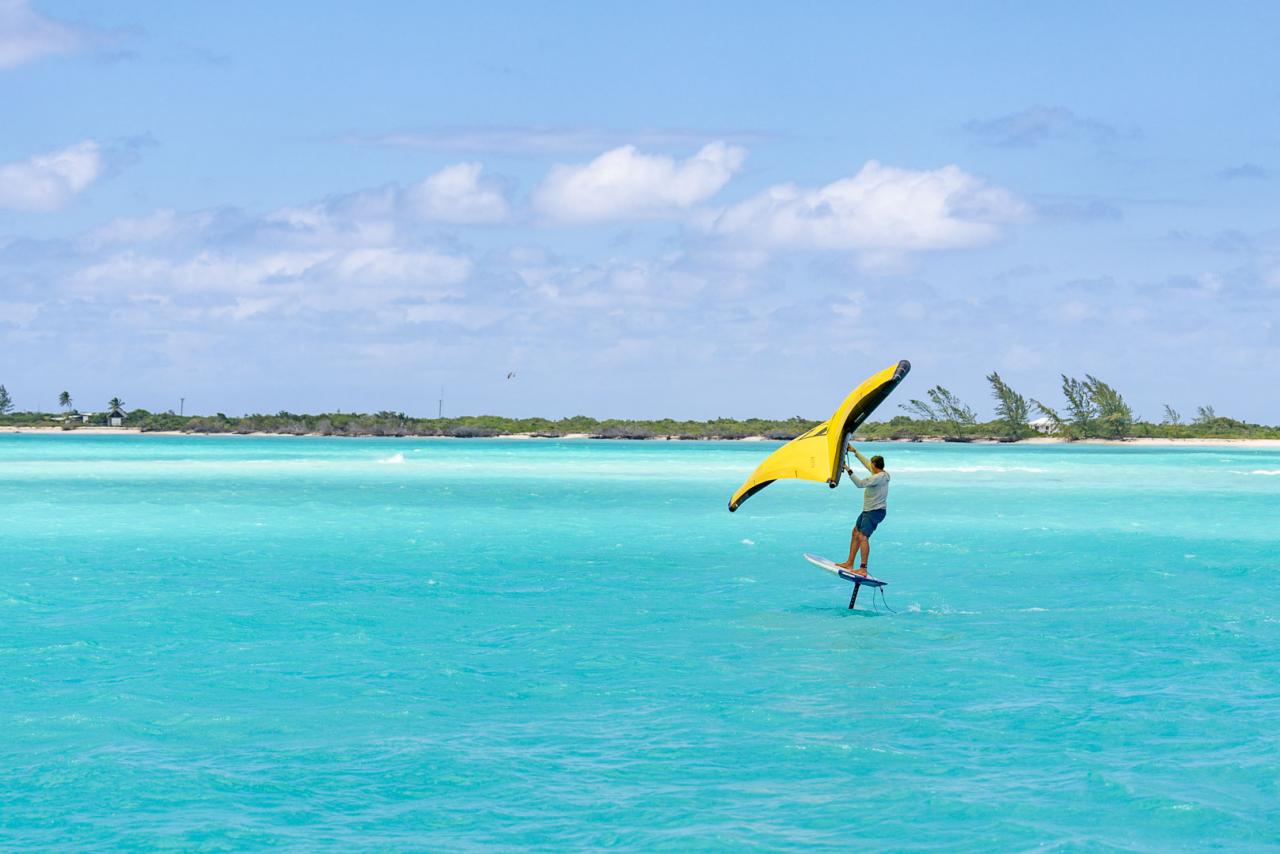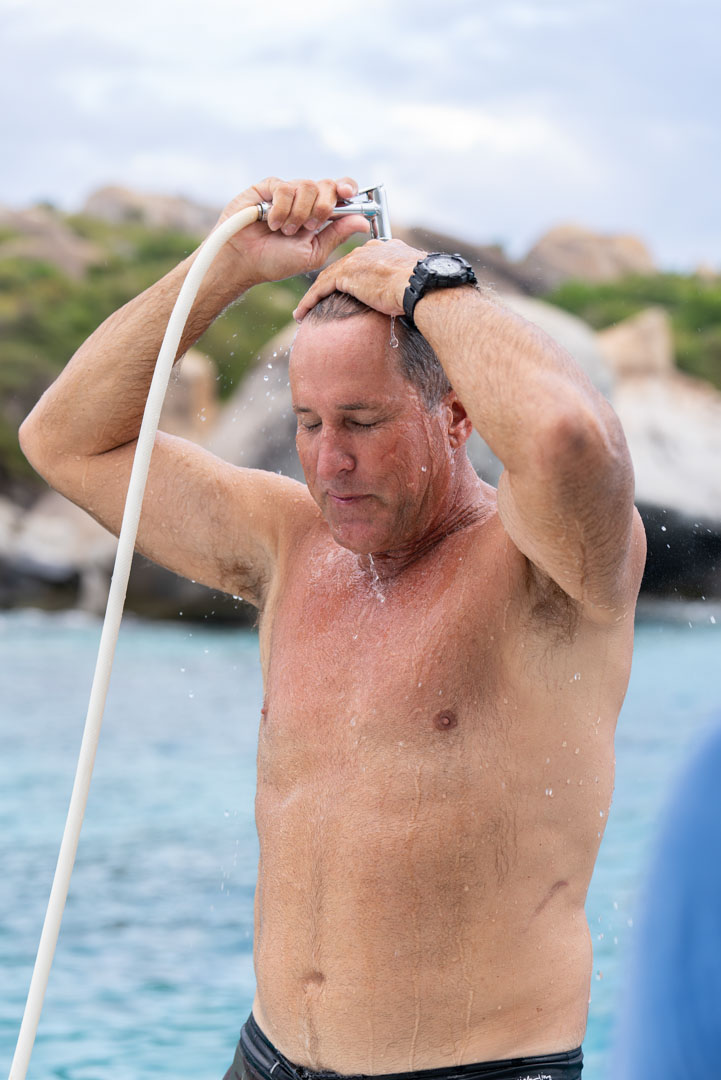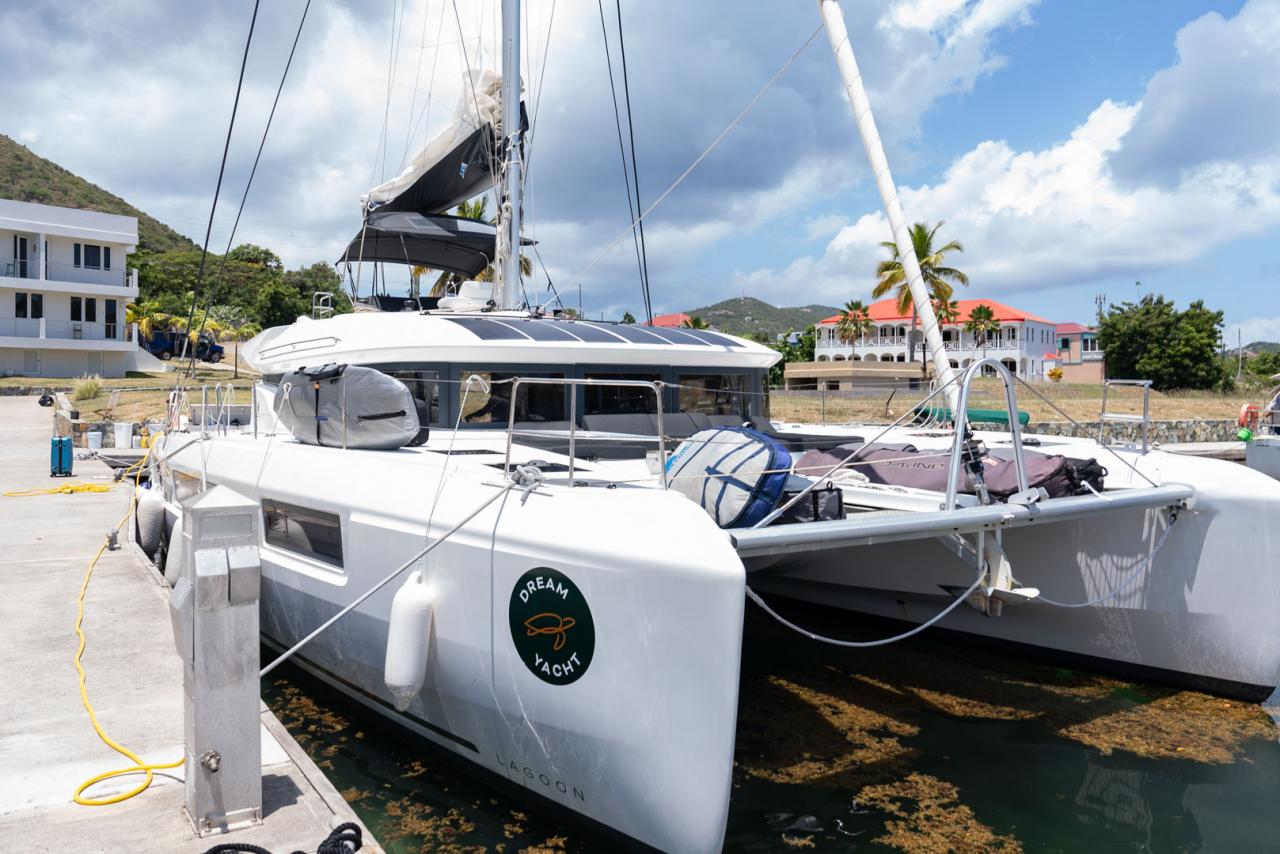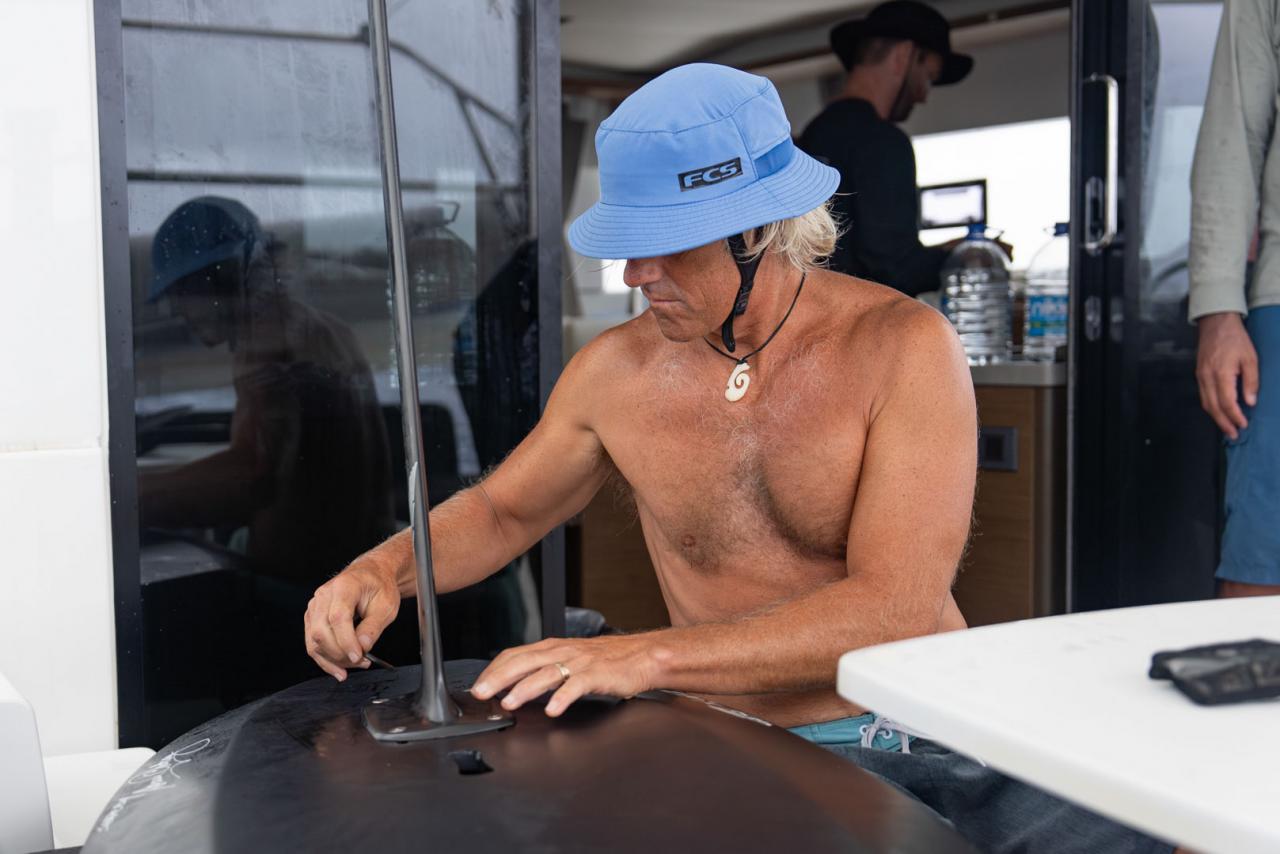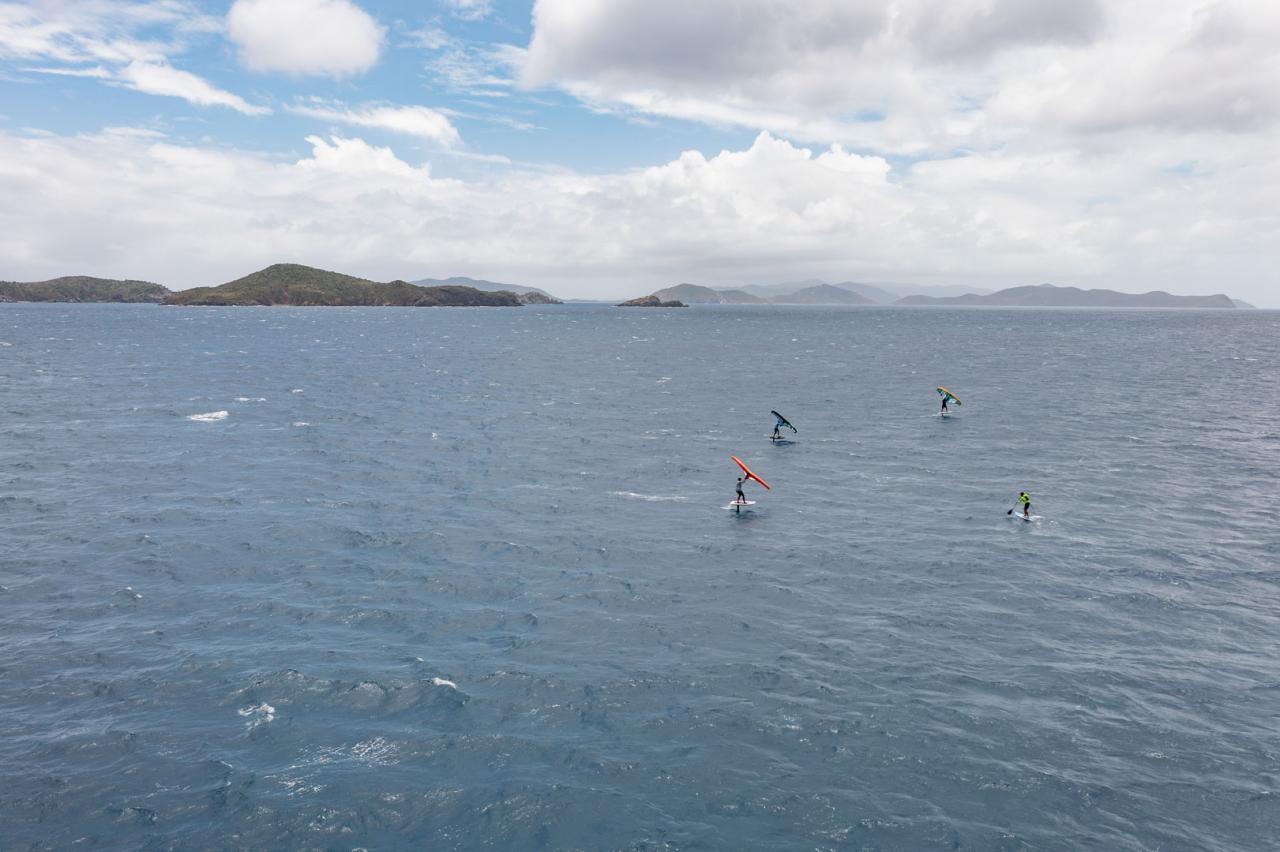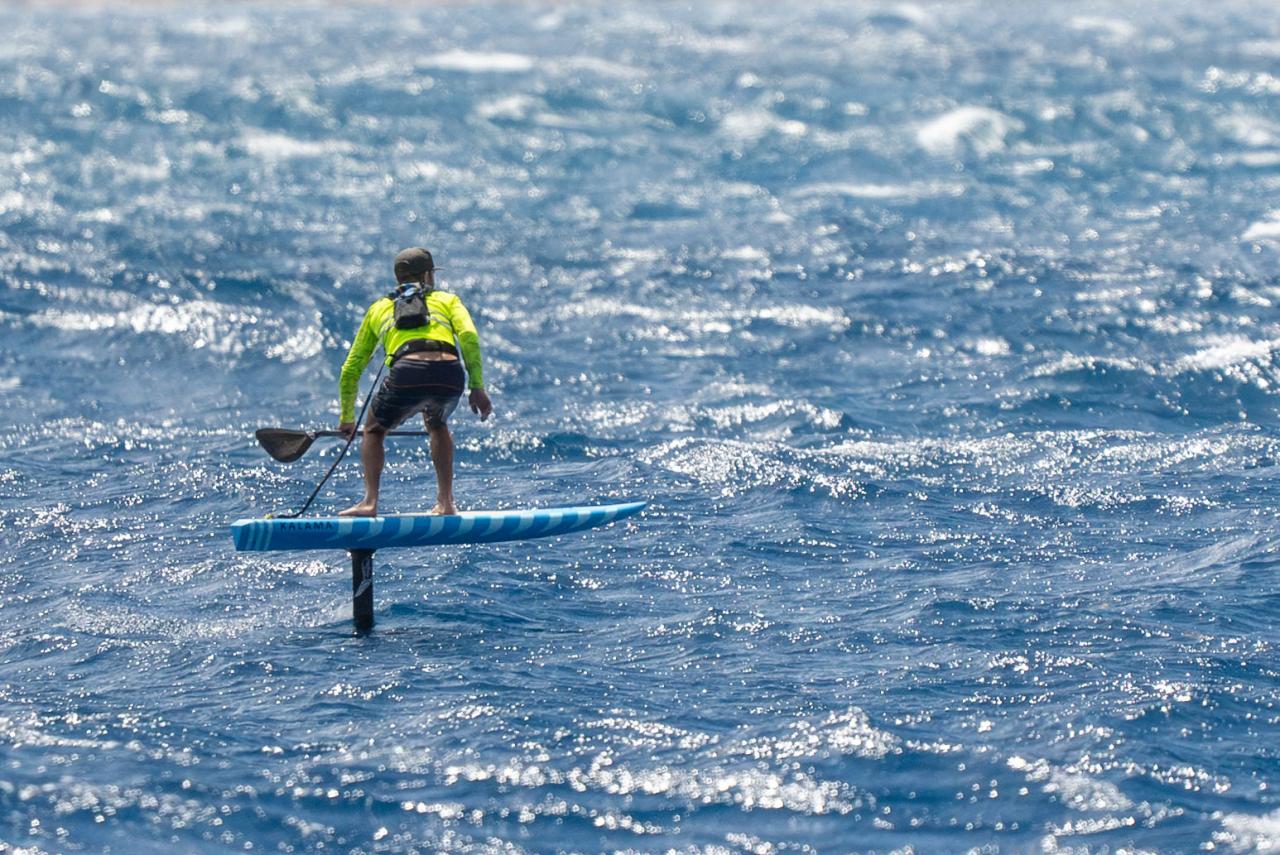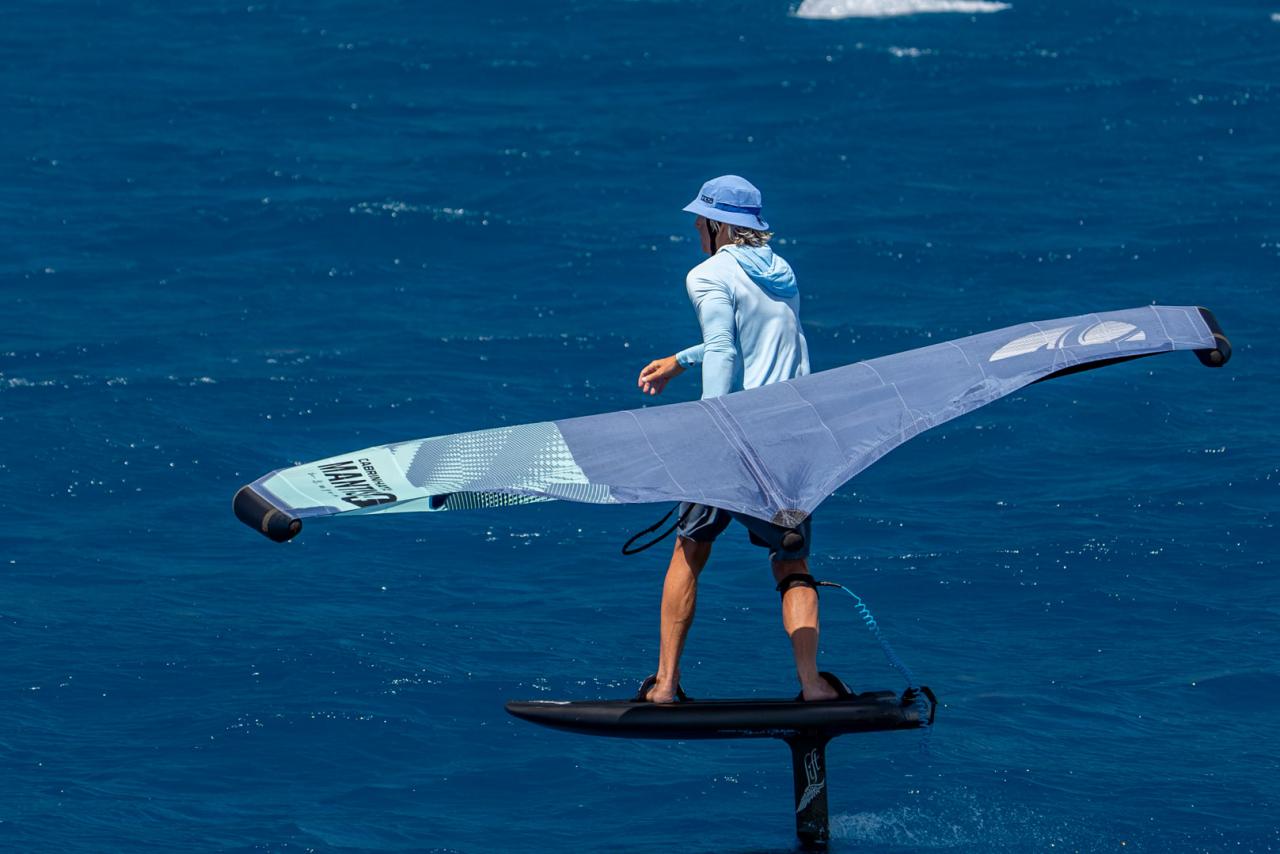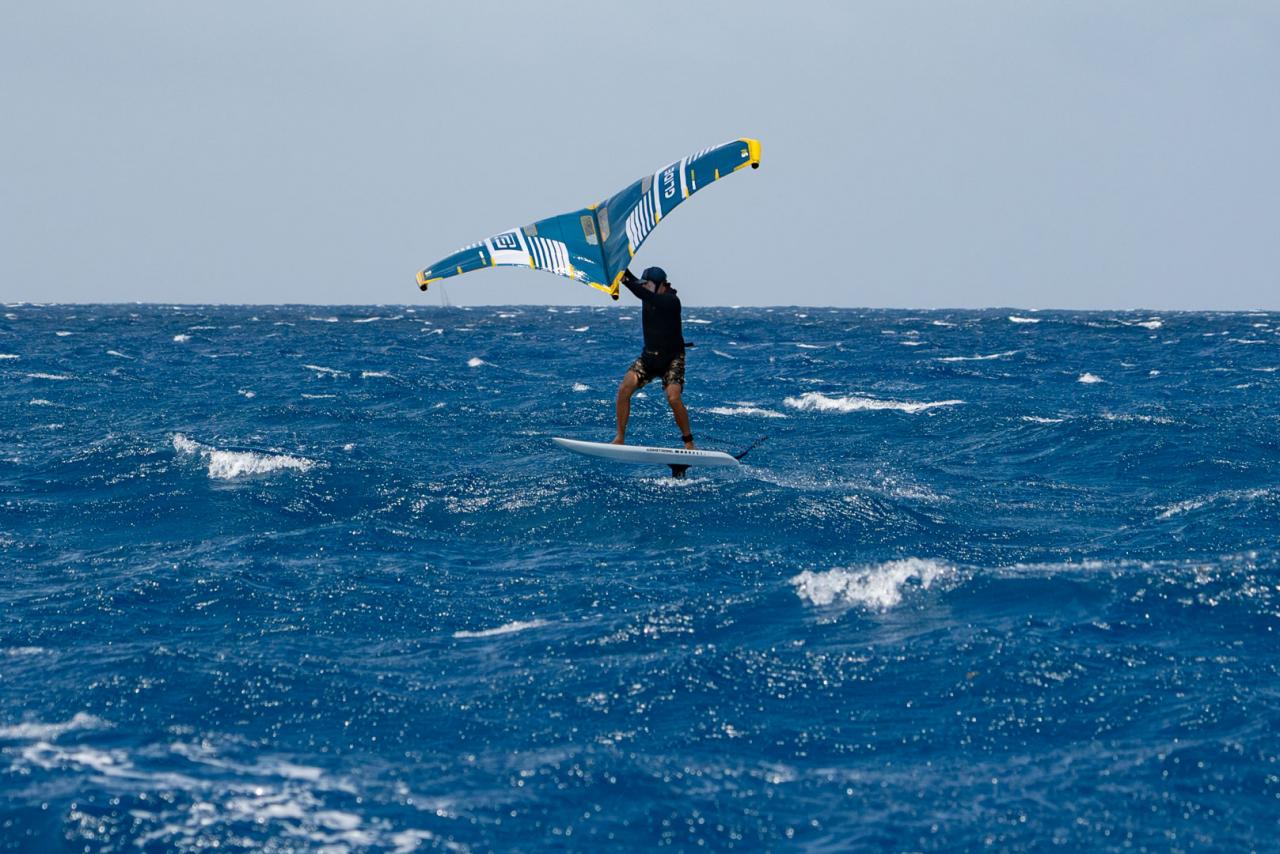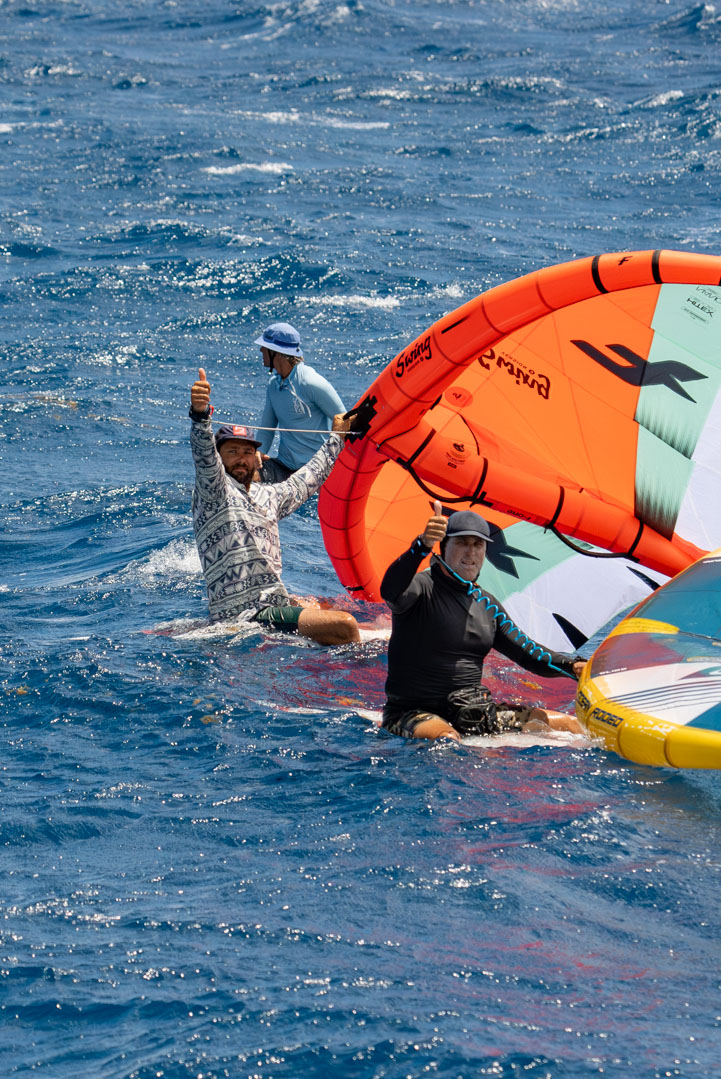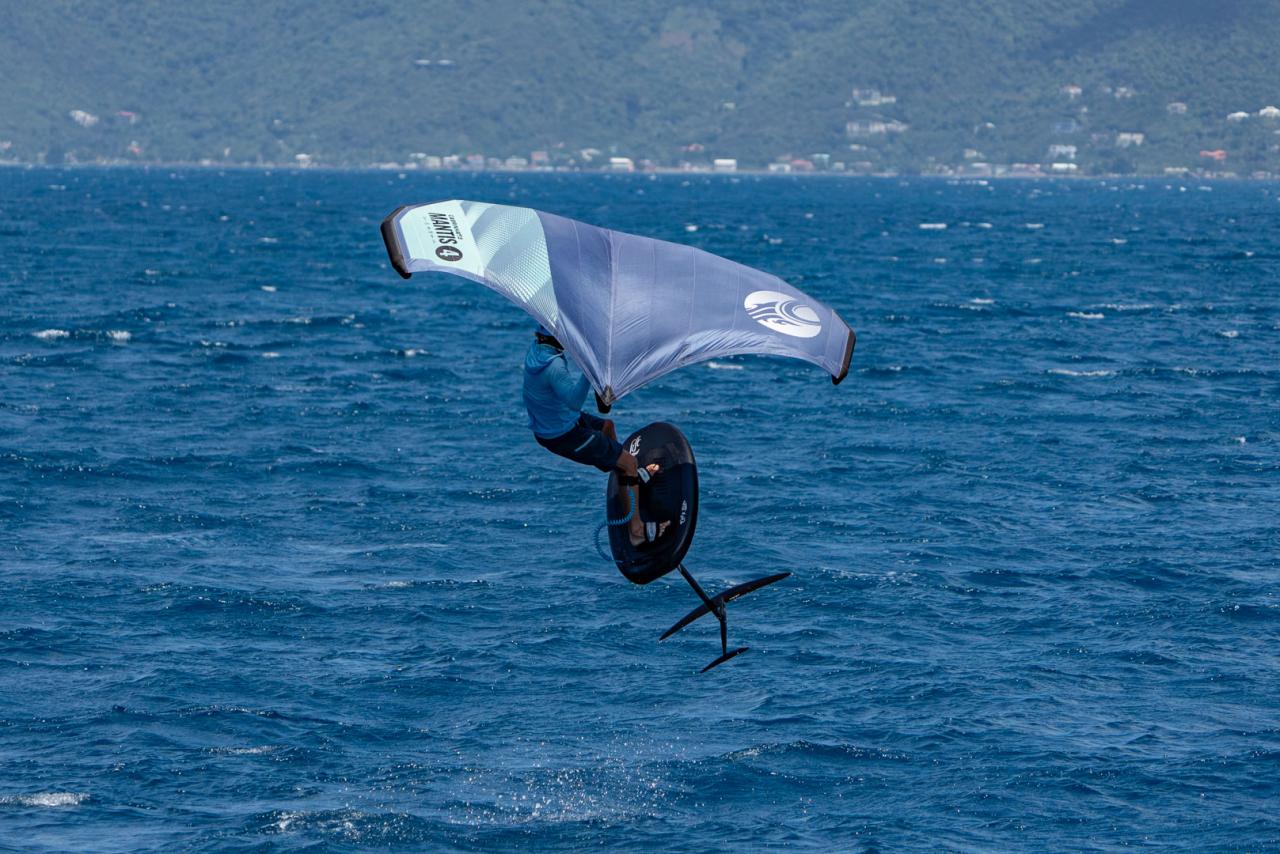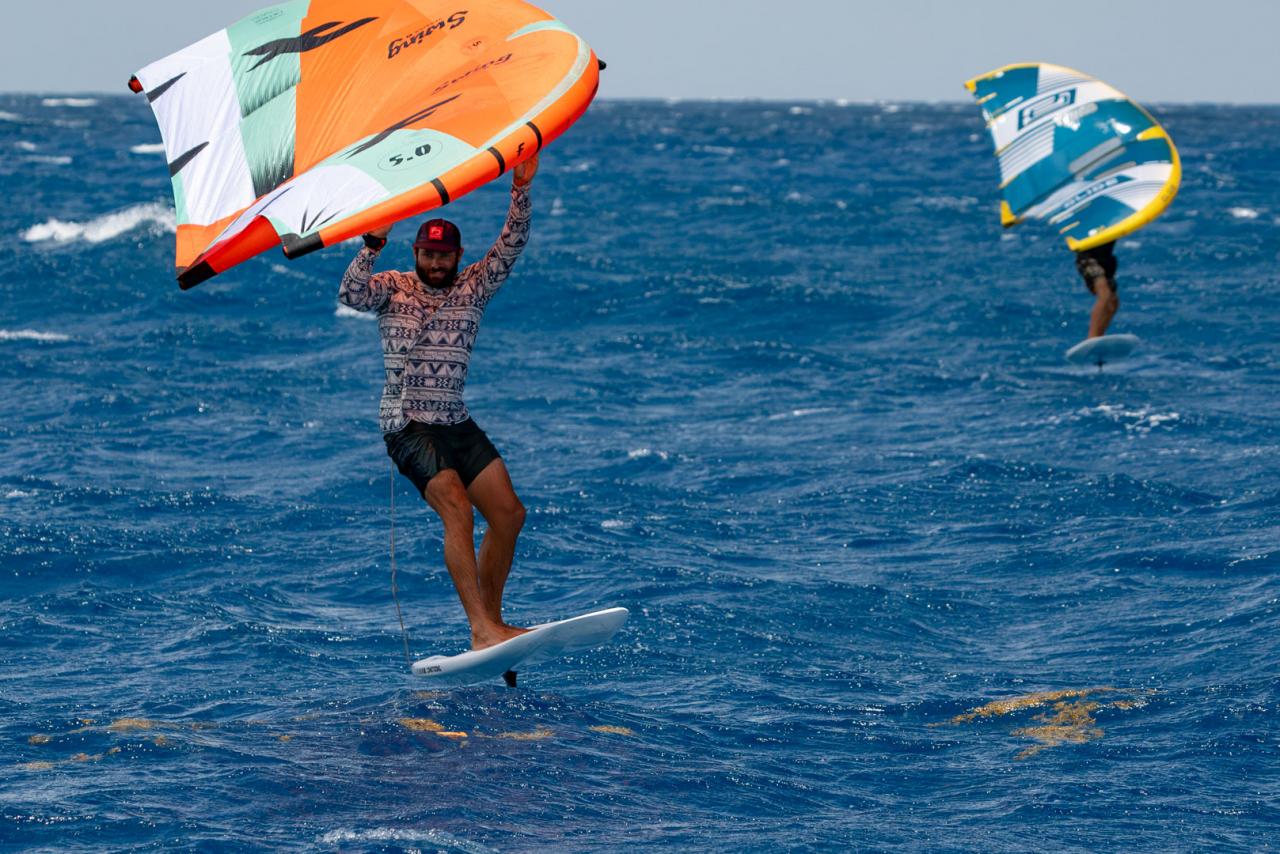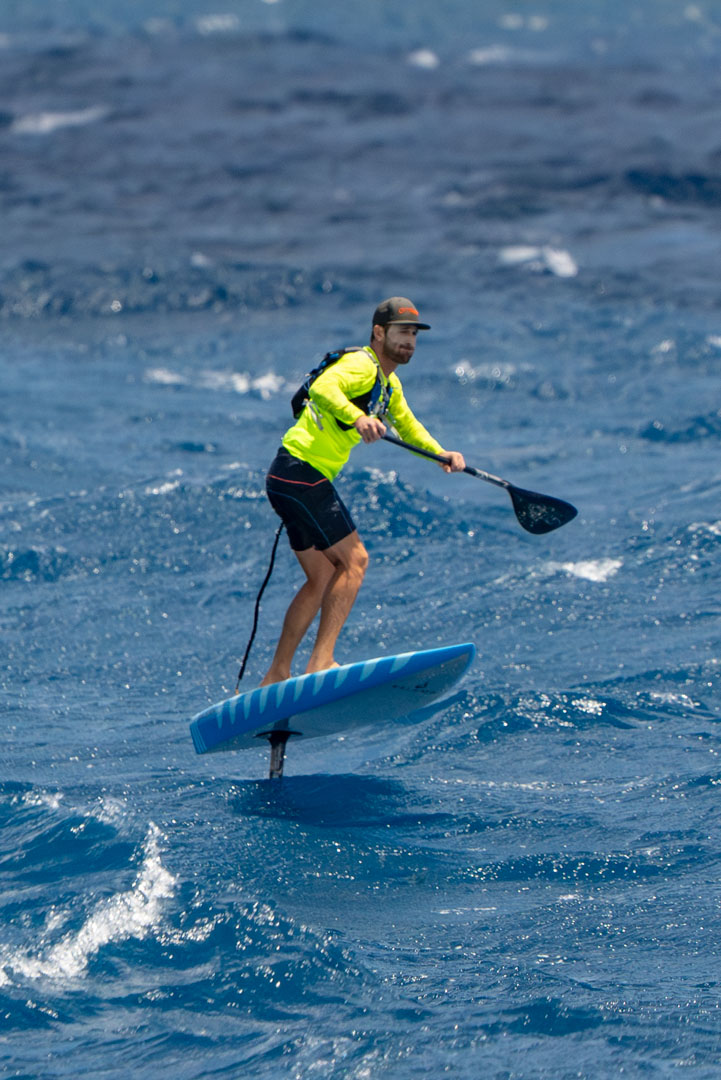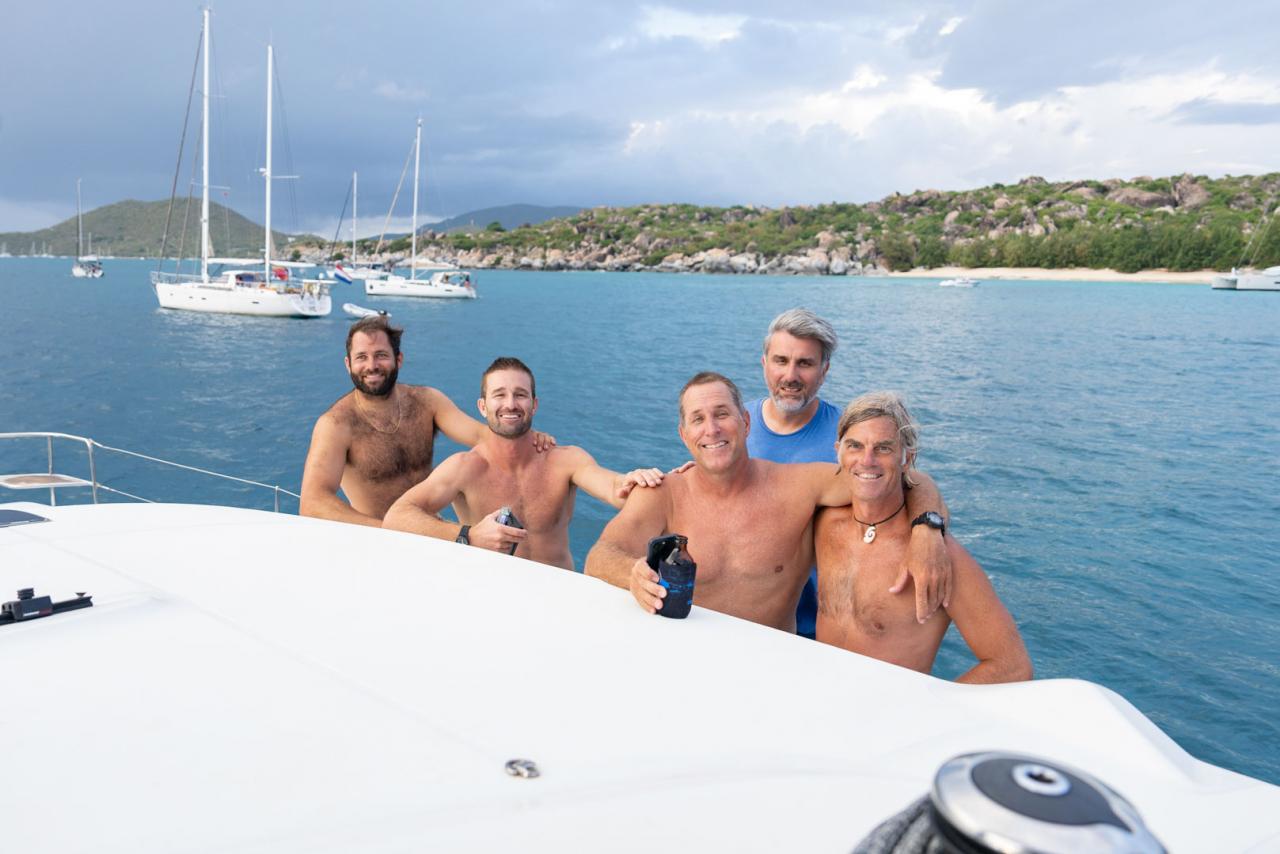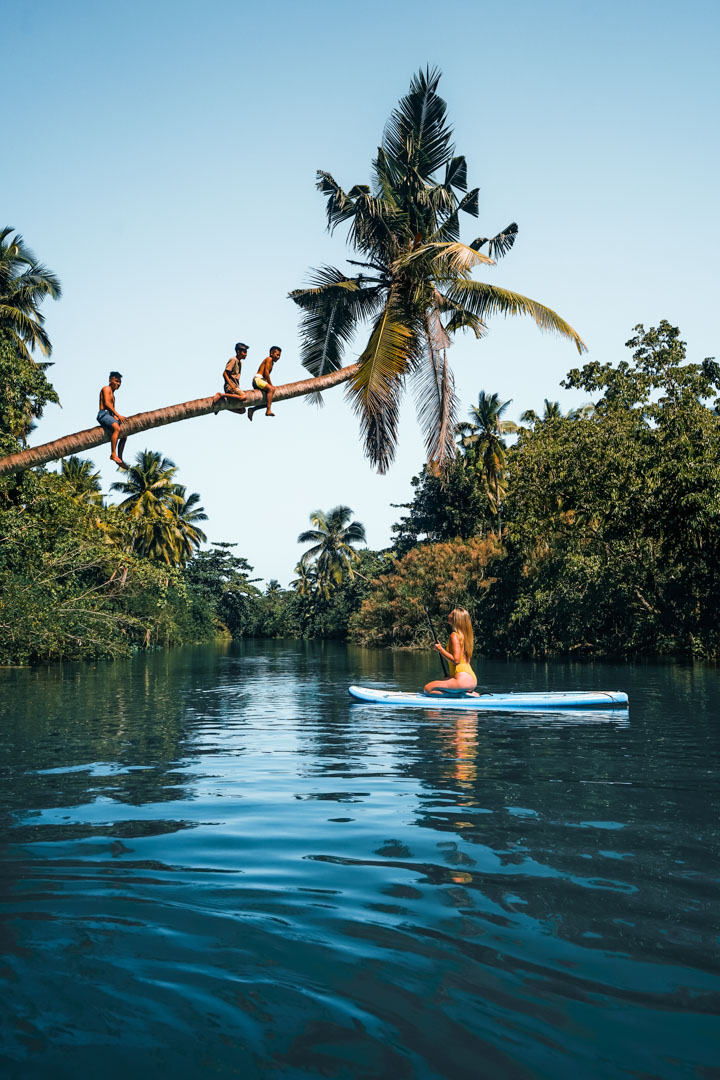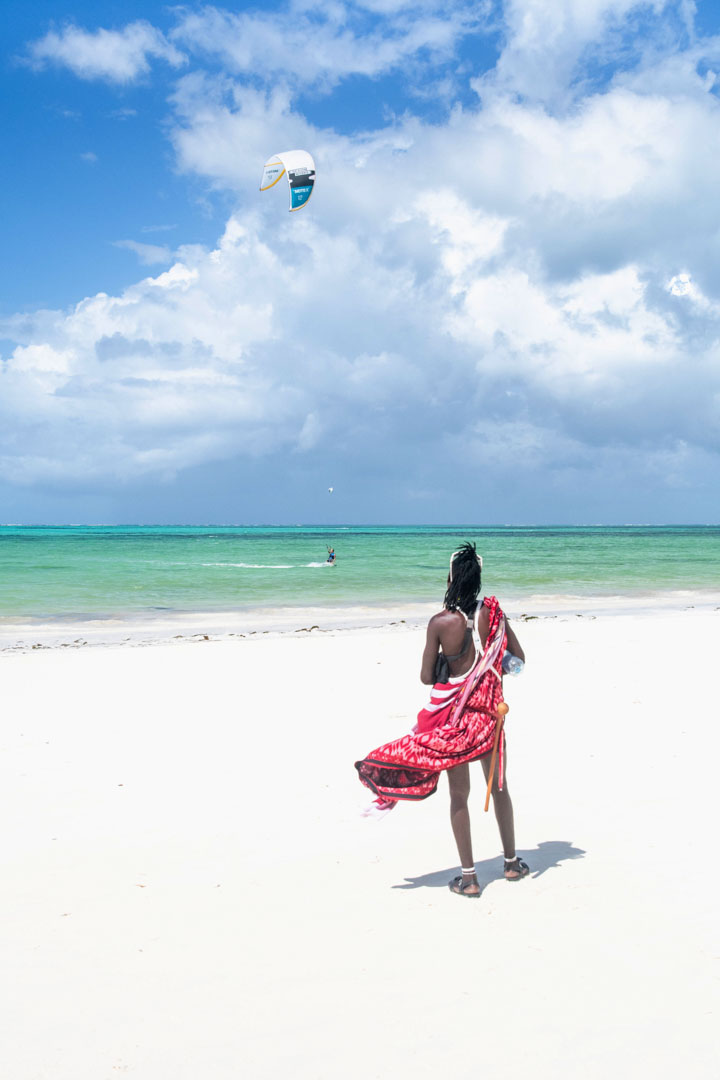Trade winds occur in what meteorologists refer to as the Hadley Zones of the planet. These atmospheric areas exist in the 60 degree latitudinal band that wraps around the globe at the equator. The northern Hadley Zone fills the space from the equator to 30 degrees north while the southern zone occupies the adverse area to 30 degrees south.
The equator is closer to the sun than any other place on earth resulting in higher year-round temperatures. As the sun's rays heat up the land and ocean around the earth's mid section, the resulting hot air rises into the earth's atmosphere to about 15 kilometers from the surface. At that altitude, the air cools causing it to move away from the heat source and toward the respective poles north and south. These cooler pockets of air are denser and heavier than the air at the equator causing them to descend back to the earth's surface at roughly the +/-30 degree latitude points creating a continuous loop of air circulation in each Hadley Zone. The rotation of the earth forces these otherwise northerly and southerly wind funnels to bend easterly through what is known as the Coriolis Effect which is why we have trade winds.
The Caribbean Islands sit directly in the mid-section of the northern Hadley Zone creating consistent, steady winds ideally suited for downwind adventures. I had been doing a lot of wing foiling on the west side of Puerto Rico last winter and had formed a kindred bond with a few of the frequent users. One such member is Craig Prothers who often spun stories pre- and post-session of epic winging destinations just east of us in the British Virgin Islands. Apparently the BVI's are rich with wind and countless keys, bays, reefs, and downwind runs that are perfectly suited for anyone with access to a boat and a bent for adventure. Craig captains a 50-foot catamaran out of Tortola, taking guests to many of these treasured spots and had just inspired our little group to consider joining him on a tour the following season.
Tortola is the largest of the British Virgin Islands and the landing pad for our flight from San Juan. Unfortunately, Craig was booked for the week that our group was free to jump so we signed onto a boat and a captain with the good folks at Dream Yacht Charters out of Hodges Marina. I had flown in a day before the rest of the group to help minimize the freight load on the small puddle jumper considering all the boards and gear we would be bringing. Getting there early also gave me an opportunity to connect with my old college friend and roommate, Mike Loyd. Mike met me outside baggage claim and walked me from the airstrip to a small dock across the street. We loaded my wing gear onto his modest center console and motored across the channel to Great Camanoe Island where we'd be staying for the night.
The BVI's are a cruising mecca. Thousands of mega yachts and large sailing vessels make their way to this archipelagic oasis year after year to island hop across narrow channels taking in the indescribable natural beauty of the area. The most well known and largest islands are Tortola, Virgin Gorda, Jost Van Dyke and Anegada. All but Anegada are volcanic, offering panoramic views from the discreet homesteads tastefully constructed and spaciously placed across the hillsides. The easterly trades funnel their way over the peaks and valleys of the islands accelerating through the negative spaces between the land masses creating venturis around every corner. Between the stunning visuals and strong steady winds the stage had been set for what would certainly be an epic week on the water.
Mike spends a lot of time under water diving and snorkeling the reefs and drop offs surrounding Great Camanoe and Tortola. We ventured out the next morning equipped with masks, snorkels and fins to drift in the current around the small island of Marina Cay before packing up for the short boat ride to Hodges Marina. My counterparts were already aboard the catamaran when we arrived and were busy stuffing groceries into every available storage locker in the overly spacious kitchen. The Y-Nissi Lagoon 50 would be our floating accommodations for the next five days and nights. She was one of a hundred on Tortola, but unique to us. Designed for comfort and convenience, these cruising catamarans make it easy to live aboard for extended periods of time with ample space to chill, eat and sleep. Once the gear and food was loaded and secured, we signaled to our captain that we were ready to push off and set a course for the first stop on our agenda.
We had spent plenty of time consulting weather forecasts leading up to the trip and the outcomes were looking good. If things played out the way we anticipated, the winds and swell would be building with each successive day. The first few stops we made were obligatory destinations that every traveler to the area should make. That afternoon we anchored off a small island off the southern tip of Virgin Gorda, swam ashore and climbed around, over, and through the boulders of Fallen Jerusalem. Anchoring and mooring would become regular occurrences in our everyday vocabulary and muscle memory. Each destination required us to do one or the other depending on what was available and our captain appreciated and often encouraged our participation. We all quickly re-familiarized ourselves with how to tie a bowline, cleat a line, and set the mooring lines in such a way that would appease our captain's particularities.
Our captain, Levin, had grown up on Tortola and seemed to know every inch and detail of each island, mooring field, waterway and anchorage. Levin loved fishing as much as he loved sailing and was often trolling for kingfish or wahoo whenever we were under sail. He was ultimately responsible for our safety and took his job seriously. He willingly accepted our float plan which required him to drop us in the middle of these windy channels to downwind alongside the boat where pickups would be more dangerous than challenging. It became very clear early on that our cruising plan was atypical for the area. The BVI's have a very boozy reputation. Most ports and points of interest play host to a number of well-known rum bars that you may or may not have heard of in a Jimmy Buffet lyric. Most of the catamarans we encountered were bar hopping from one ramshackle sandy beachside bar to another allowing their guests to enjoy a much needed departure from their everyday normal lives. We showed up with a much different plan.
The boys on the boat were all friends of mine from Rincon, Puerto Rico: Greg Carson, Adrien Julien, Bobby Bechtel and Stefan Botchev. We were joined by photographer Gigi Veve who did an outstanding job capturing the memories and blending in with the group. I knew these guys fairly well, but mostly through our shared interest in winging. I had never spent much continuous time with any of them. The idea of sharing a boat for a week with people you don't fully know should probably create some pause, but these guys are all salt of the earth people who were beyond stoked to be on this adventure. Building the invite list was tricky and not everyone I initially invited could make the logistics work. I was particularly impressed by how quickly and definitively each member of this trip confirmed their invitation. Each one of them knows all too well how positive the returns can be from delivering a swift unequivocal 'yes' when declining is often a much easier and more convenient response.
Hurricanes are an ongoing legitimate threat to the Caribbean and the BVI's have been hit hard recently by the likes of Maria and Irma (both in 2017). Evidence of these storms and the damage caused was evident through the large number of pleasure boats strewn along the coastlines. It was not uncommon to see a few generously sized sailboats piled on top of one another atop a reef or pushed up and onto a neighboring beach.
Day Two started with a quick, early morning tour of what the area considers the 8th wonder of the world. The Baths on Virgin Gorda are apparently visited by more than half the visitors who make their way to the BVI's. The short beach walk through the colossal-sized boulders was indeed impressive and we were fortunate to be able to get through the labyrinth and back to the boat before the mid-day rush. Motoring upwind along the northwest coast of Virgin Gorda, we rounded Mosquito Island and found anchorage in the lee of Eustatia Island owned by Google founder Larry Page. There were heaps of heavy construction vehicles on the island pushing large piles of dirt in preparation for what I could only imagine would become a sizable compound. A short distance upwind from our anchorage was Sir Richard Branson's Necker Island which has a rich history of popularity due to the prestigious people and events the island has hosted over the years.
Once our boat was securely anchored, it was time to set up for the first wing session of the trip. The wind was on the lighter side, but the location was surreal. Excitement was riding high as we worked to figure out how to safely and efficiently assemble the foils and inflate the wings off the aft deck. Once we were in the water, the temptation to get upwind to Necker was too tempting. There was also a nice line of wind swell bumps between Necker and Eustatia further incentivizing us to head in that direction. We made our way upwind and surfed the wind swell for a couple hours, taking time out to set foot on the mysterious sand spit off Necker where Branson had planted a few fake palms. As the sun started to set and the wind began to fade, we made our way back to the boat completing the first of many cycles launching and landing from our floating command center.
Dinner that night was scheduled to take place on the infamous Saba Rock which was a 15 minute motor from where we finished up. The rock is no bigger than an acre, but has the prestige of being one of the most visited places in the BVI's. Hurricane Irma completely destroyed the original outpost which has since been reconstructed with a completely new vibe that seems to cater to the tastes of a higher echelon than we were used to. Carson was particularly disappointed with how “fancy” the place had become since his last visit almost ten years prior. Regardless, we made the dingy ride over to the dock, rafted up with the almost 50 other small inflatables, had a drink, ate some fresh fish then headed back to the boat where we easily drifted off to sleep after an eventful day.
The wind had picked up by morning and the forecast was looking very promising for the rest of the day. We raised the main, unfurled the jib and set a course for Anegada — the northernmost island in the BVI's. Anegada is 15 square miles in size and the least populated island with a little over 200 inhabitants. We covered the almost-20 nautical miles on a single tack in just over two hours with sustained winds of over 20 knots. We had set our course for the west end where the buoys were predicting we’d meet up with a 6 foot @ 15 seconds swell that was scheduled to peak that afternoon. We anchored within sight of the waves, but couldn't really tell how big they were from that distance.
We pumped up the smallest wings we’d brought and launched off the back of the Y-Nissi. The water was emerald green with patches of shallow coral below and visible puffs of offshore textures on the surface. The wind direction was in our favor giving us a straight shot to the far end of the reef on a single tack. The direct exposure of Ruffling Point produces a wave with plenty of energy and raw North Atlantic power. The conditions lined up beautifully for foiling with a combination of open ocean swell on the outside and a perfect right-hander on the inside that broke into a nice, deep water channel. Levin had cautioned us before we left the boat letting us know that the closest hospital was back in Tortola so “take it easy”. Up until this point, he didn't know how much experience we'd had in conditions like these and quite honestly, neither did we.
The waves were epic and it didn't take long before a team of kiters came out to join us. “Where did these guys come from?” One minute you're thinking you’re as remote as you can get, then suddenly a crowd emerges. They were as surprised to see us as we were to see them. The thought of a chance encounter like this one only heightened the vibes. Once it was clear that both parties were happy to see one another, the level of engagement and bravado amplified. We were hooting each other into sets, sharing waves, and working like a fluid machine on a mission to make sure no wave went unridden. Gigi was on the dinghy in the channel putting herself closer to the action than was warranted. Levin was back on the boat watching somewhat nervously from a pair of high-powered binoculars. The inevitability caught up to us eventually and we found ourselves getting a little too deep on a few waves that closed out and separated us from our gear.
Carson took the first wave of that set. It was a bomb. He rode it well inside where the wind had gone slack. I was on the next one staring down a steep drop. Carson was standing below me powerless. He was already in the act of ripping off his wrist leash and diving to the bottom when I started to straighten out. The whitewater eventually caught up to me and took me out. I “Superman-ed” my way through the surge trying to fly through the water as efficiently as I could. That wave would eventually pass, but the next one detonated on top of me. My wrist leash popped and my wing was still inflated, but no longer attached. Both our wings were now dancing downwind at a pace that was unreachable. Fortunately our dinghy was still in the channel and able to make the pick up. Our safety preparation and planning had paid off and everyone responded exactly as we'd discussed. Another solid example of the value of prior planning. Carson and Bobby Bechtel are both certified ocean safety experts. It's always reassuring to have a couple people with their credentials on a trip like this one.
We spent the night on the mooring off the west end and sessioned the wave off the point again the next morning. The swell had dropped and eventually the wind subsided giving us an opportunity to make our way to shore to explore the island and potentially meet up with our kite surfing friends. We rented a truck and drove around the entire perimeter. I appreciated the simplicity of life on this desolate island that had a pace wildly different from its volcanic siblings to the south. We stopped to see the salt flats where the now-protected flamingo was slowly being reintroduced after decades of pressure from hunting. We cruised through The Settlement which was a sparsely populated residential center for the island. We eventually made it back to the west end where we met up for a chat with our kiter counterparts who confirmed that the conditions we saw that day were as good as that place gets.
Our entire trip was predicated on the idea of finishing the last leg of the tour by downwinding the 20+ miles from Anegada to Jost Van Dyke, but the wind direction wasn't cooperating. The trades were blowing hard but the direction was straight east which meant we'd have to continually saw-tooth our way south along the route in order to stay on course. We decided to make things easier for us by sailing the boat back to Virgin Gorda and launching the downwinder from there. That position would put the wind directly at our backs sending the bumps directly toward our takeout at Sandy Spit on Jost.
We anchored the Y-Nissi in the lee of one of the tiny rocks in the Dog Island cluster. The skies were stormy and the winds were gusty. A quick glance at the radar showed things clearing up within the hour so we made the decision to wait for an opening. A lot of anticipation and expectations were hanging on this run. We'd been anxiously awaiting this day on the trip calendar and all of us wanted it to be perfect. Knowing that blue skies were less than an hour away made way for an easy decision to wait out the squall and maximize the scenic splendor of what lay in front of us.
Tensions were running a little high. We’d be putting ourselves in the most open water of the trip where there was plenty of current and plenty of big fish. Why was everyone so interested in sharing shark encounter stories at dinner the night before? I would have been happier not knowing how many large species of tigers, hammerheads and bulls cruise that channel and how often they're spotted. Surely we could have left that conversation until after the run had been completed. Regardless, the pure adrenaline and degree of mental focus required to connect bumps would certainly not leave any room for low-probability thoughts of highly unlikely encounters with uninvited guests. The art of downwinding commands your full attention putting your mind and body in the perfect state of flow. The job of each bump is to get you to the next one. Surfing from bump to bump while continuously staying on foil is how you make your way down the chess board of an epic run.
The sky slowly started opening to reveal growing areas of blue. The wait was almost over and it was time to make our final preparations. Carson called us to the back deck to go over our safety plan, then he took us through a prayer. The four of us stood in a circle with hands clasped as Carson asked the “powers that be” to watch over us in our frivolous pursuit of pure enjoyment. Carson, Adrien and myself jumped into the water with our wings as Bobby slid off the deck and onto his downwind SUP. We all agreed that sticking together was the best plan — this was not going to be a race. As the remaining storm clouds dispersed, the wind picked up a few more knots and we were off the starting blocks and well on our way toward Jost.
The bumps were lining up perfectly, and the fun factor was beginning to spike. We were clustered together close enough to hear the bellowing lyrics of Johnny Cash coming from Carson’s larynx giving us a clear sign that he had found his happy place. The views were as stunning as we had anticipated as we passed by the Dogs and slid along the north side of Great Camanoe, Guana and Tortola. Things were feeling fun and easy until I saw the glimmer on the water start to dull. Another big, dark cell of storm clouds were forming behind us and they looked eerie. Up until then we had been stopping along the way to allow the group to reconnect and make sure everyone's body and equipment was feeling good. When it was evident we weren’t going to outrun this next cell, we stopped one more time to discuss the plan.
Sandy Spit on the near side of Jost was barely in view. We all made sure that each of us knew what course to set in case we got separated. It was important that we all confirmed to one another that we could see the target and knew where we were finishing. As the cell drew closer, the wind picked up again and the visibility began to go opaque. We were still at least 10 miles from the finish and Jost was now no longer visible through the fog. I immediately lost sight of Carson, Adrien, Bobby and the boat. I knew they were all behind me and on foil when I last saw them. I was flying blind using the direction of the wind and the bumps to guide me to the last mental image I had of our takeout spot. At this point, speed was my friend. I was no longer cruising side to side across the bumps but pushing myself up and over in a direct line toward the finish in an effort to get there as fast as possible. I was concerned that any rain from this cell could kill the wind which would leave us all in a perilous position. Closing the gap on the final leg was my top priority and I prayed that my friends were having equal success in getting to the end with godspeed.
Fortunately, the fog was beginning to lift just in time to see my approach into Sandy Spit. Looking back, I could see the faint outlines of the boat and the distinct shapes and colors of Carson and Adrien's wings. It wasn't long before we were reunited and sharing sharp glances of relief knowing that everyone was safe and accounted for. No one was more relieved than our captain for whom I was deeply grateful for giving us the space and freedom to push our comfort levels despite the conditions.
Once we were all back on board, we shared our personal experiences and assumptions from the whiteout. Had we executed our plan properly? What could or should we have done differently? Were we smart or lucky? Maybe a little of both. Deconstructing a sketchy situation is a great way to build experience among the group and learn more about how each person thinks and reacts. When planning has run its course, instinct and intuition take over and knowing how and what your friends are thinking is a huge advantage in guaranteeing everyone's safety. My winging comrades are ocean safety experts. They all love their lives on the water and absolutely live for adventure. The adventure begins when the plan falls apart. Facing the potential outcomes of a heavy situation and making a new plan to find your way through the situation is where the prepared mind prevails.
We slept well that night rocking to the gentle swell of yet another calm mooring site. The big event of the trip was behind us and we had all made it out unscathed. The remaining days were bonus days consisting of small wave sessions, shorter downwind runs, and more bonding and connecting as a crew. We all went into this trip as friends connected by a passion for being on the water. The close confines of the Y-Nissi coupled with the camaraderie that only comes from shared adventures had drawn us much closer. I'm grateful to be able to spend as much time with this group as I do.
The trip was coming to an end, but we didn't have to say goodbye. We were returning home to Puerto Rico where the adventures will continue in more familiar waters, but with a stronger tighter bond between us. Thank you for an epic time, boys. Until next time.

